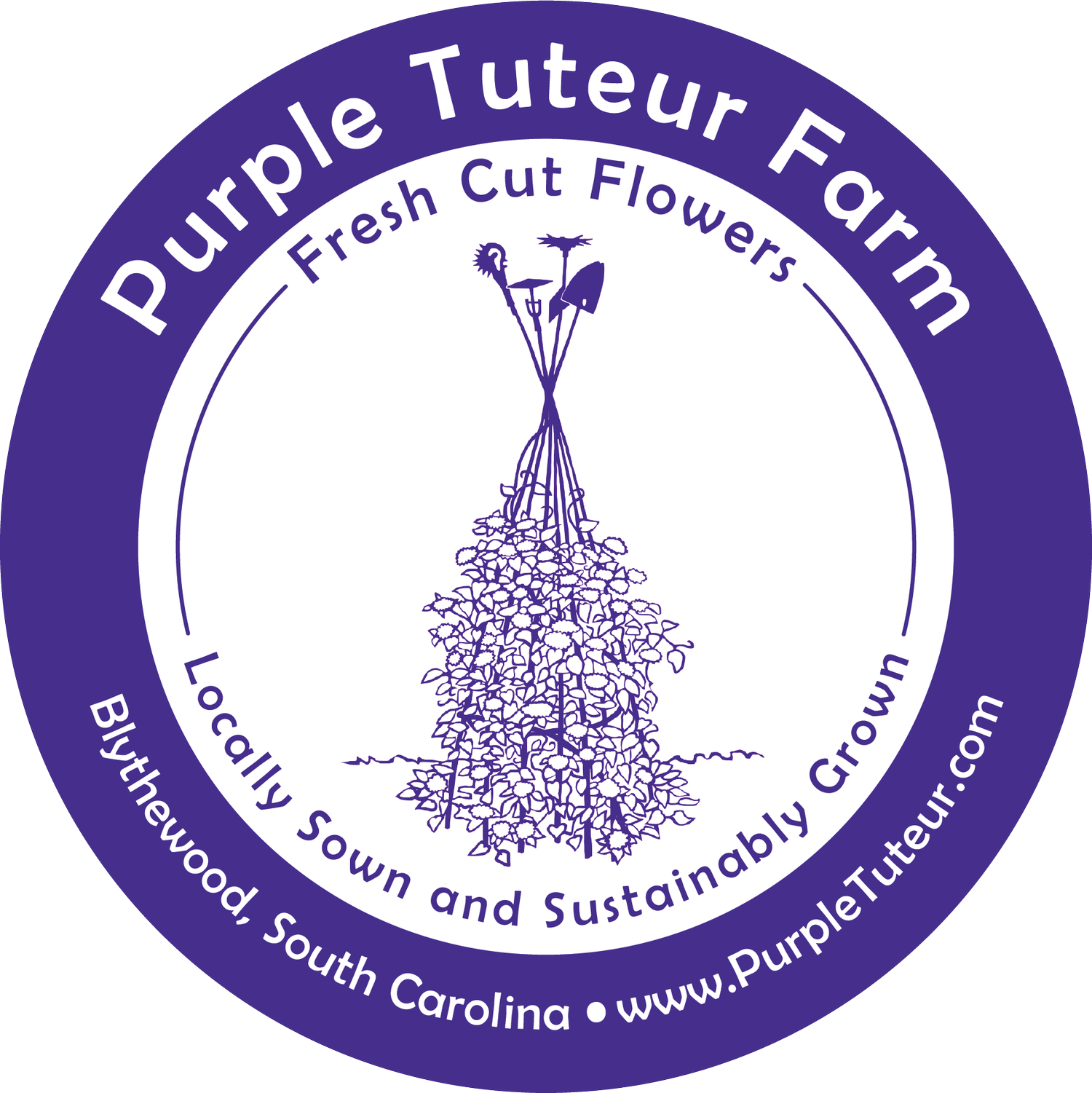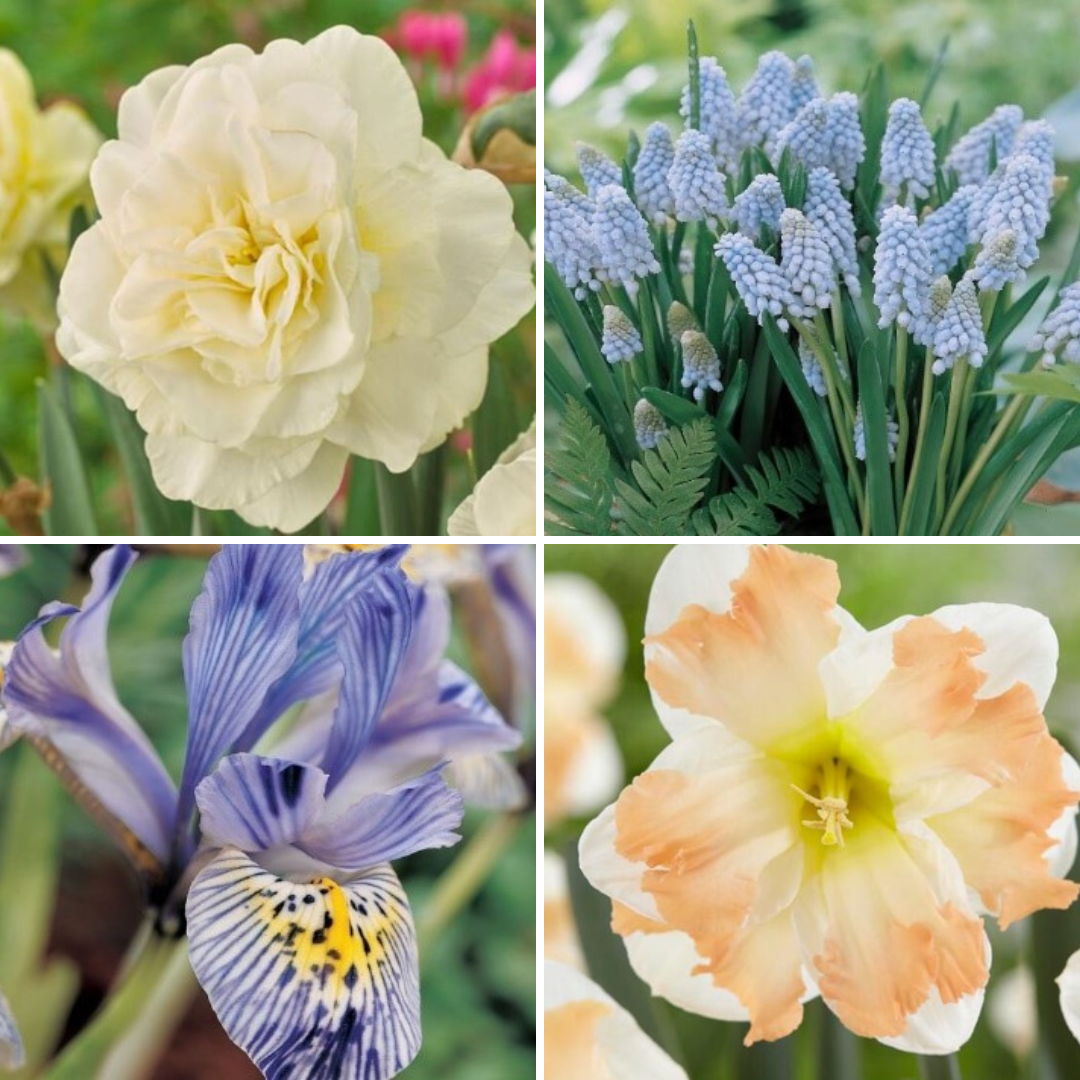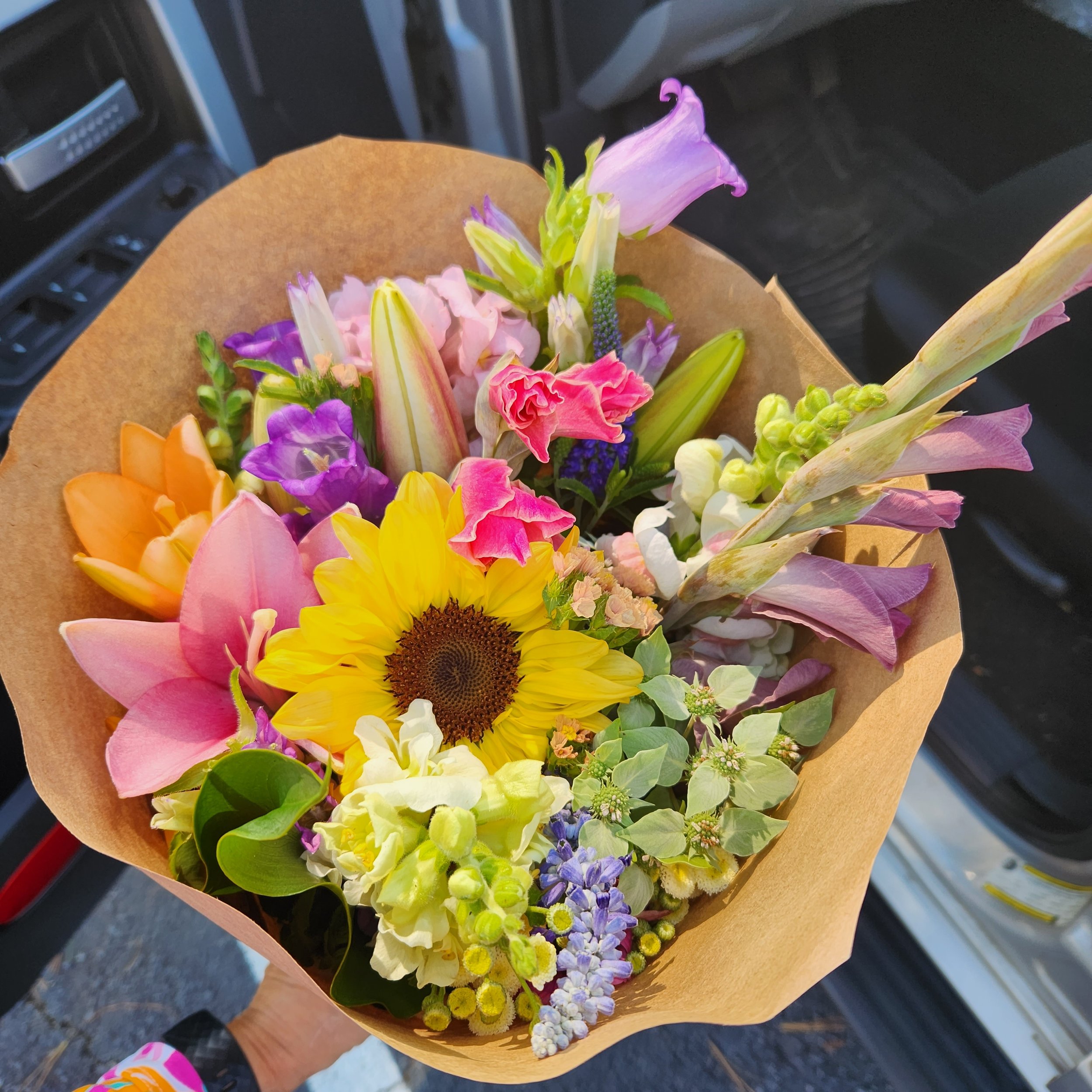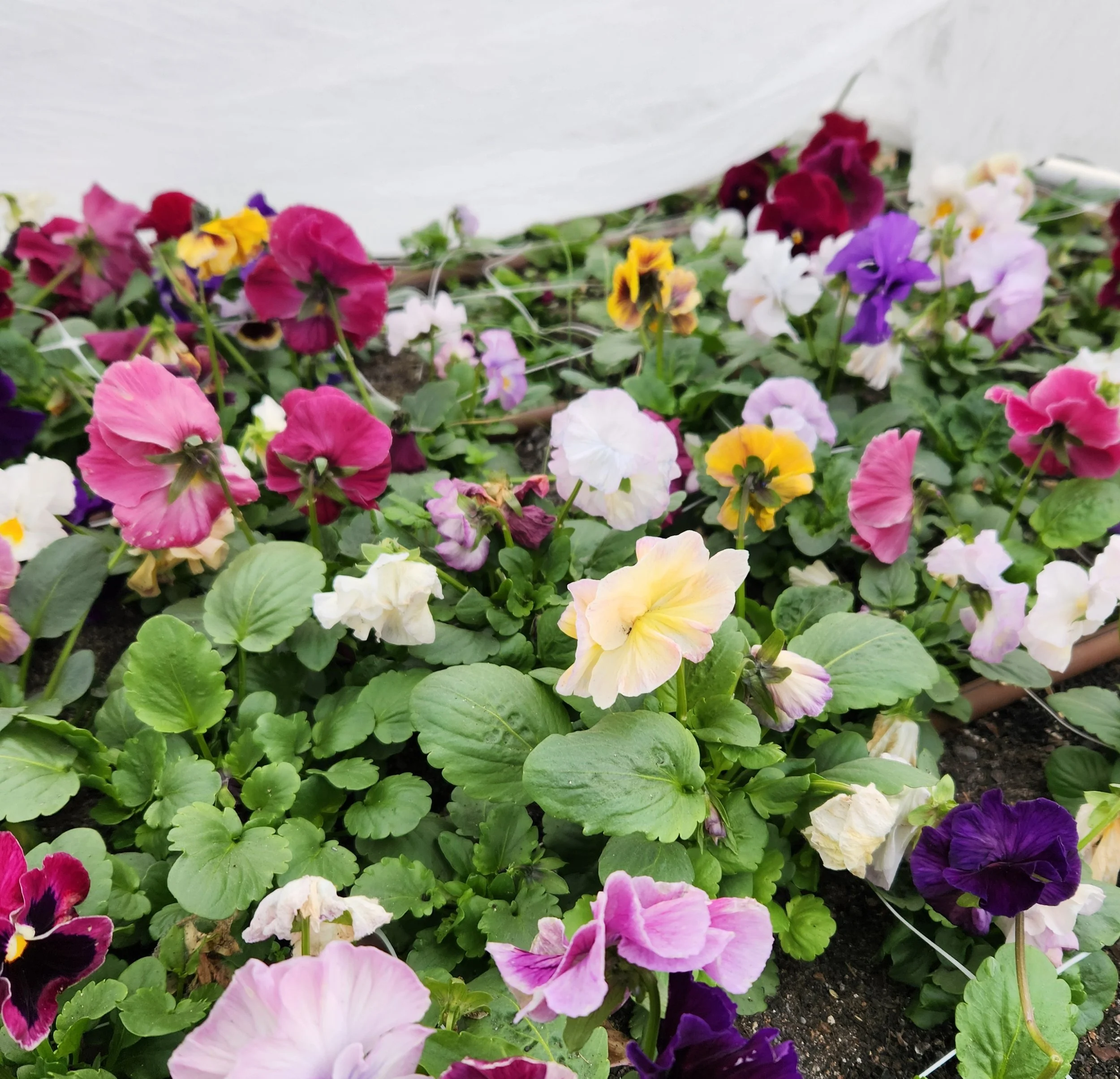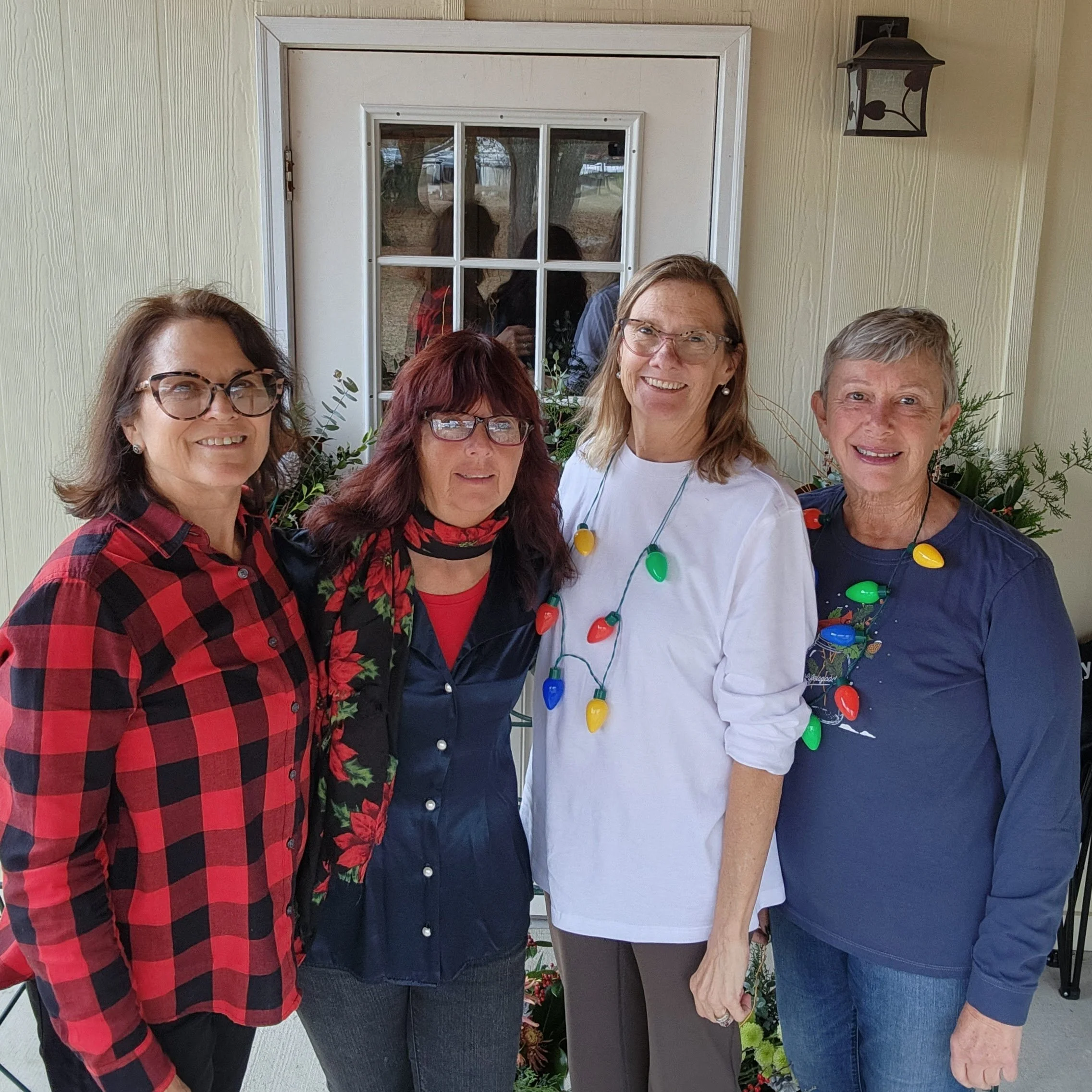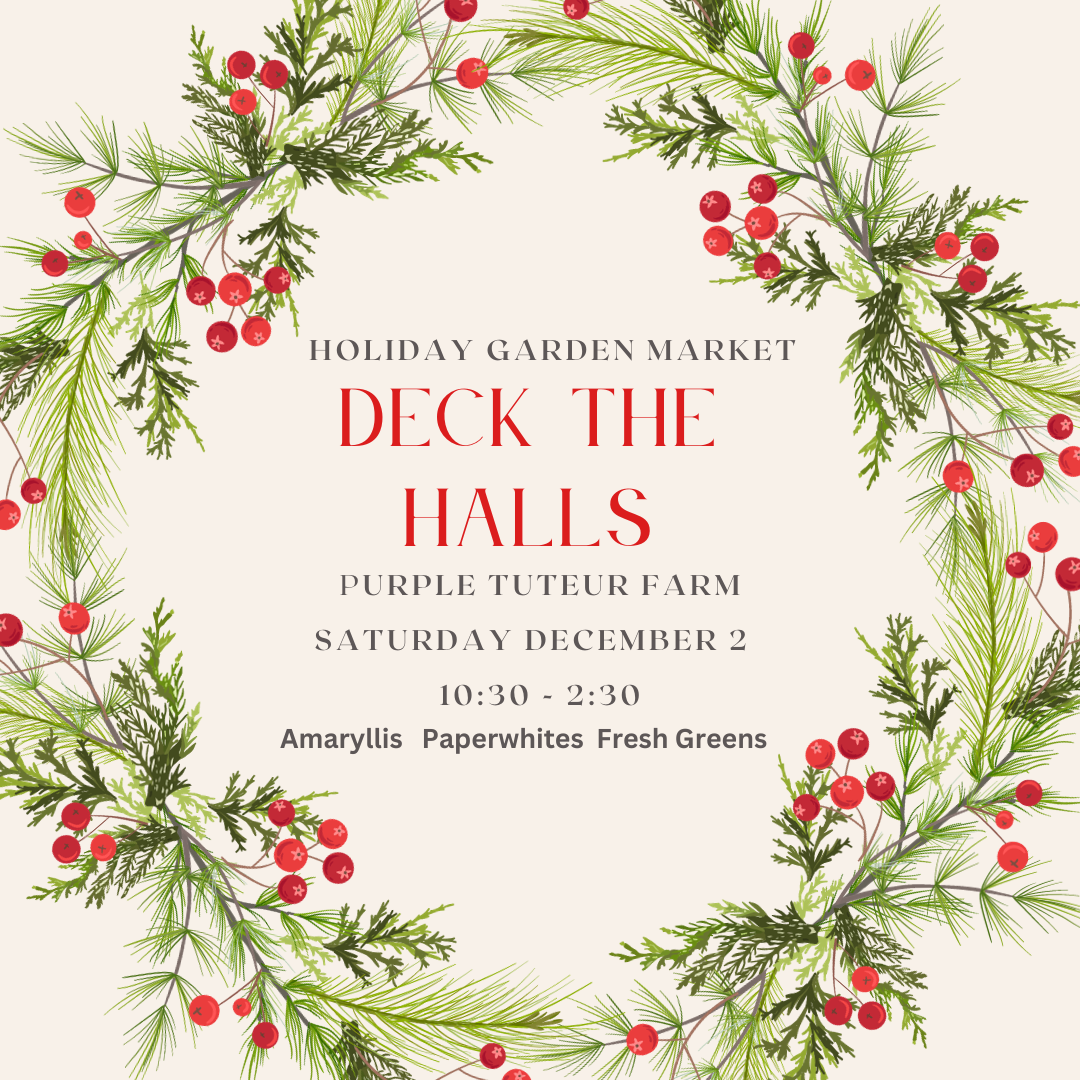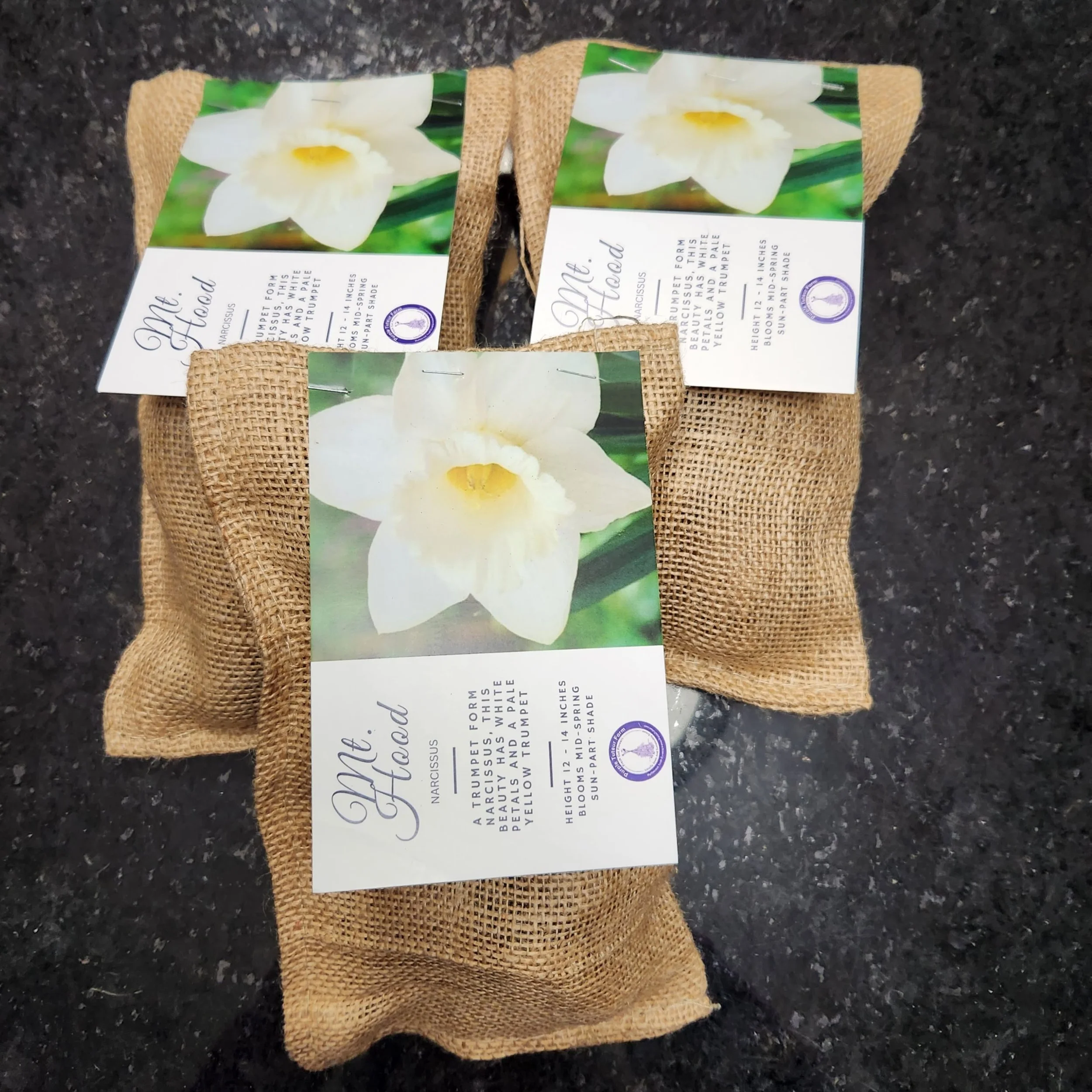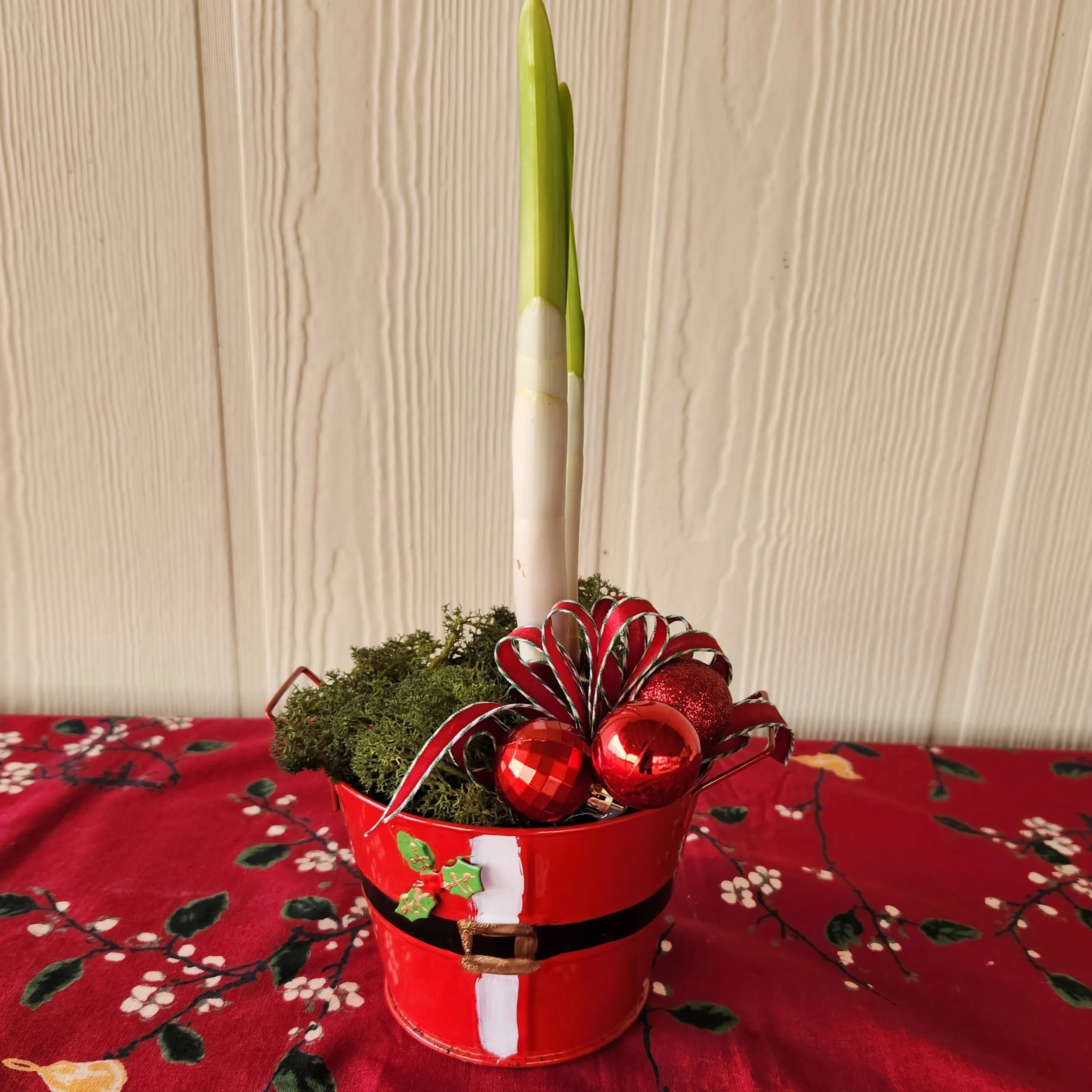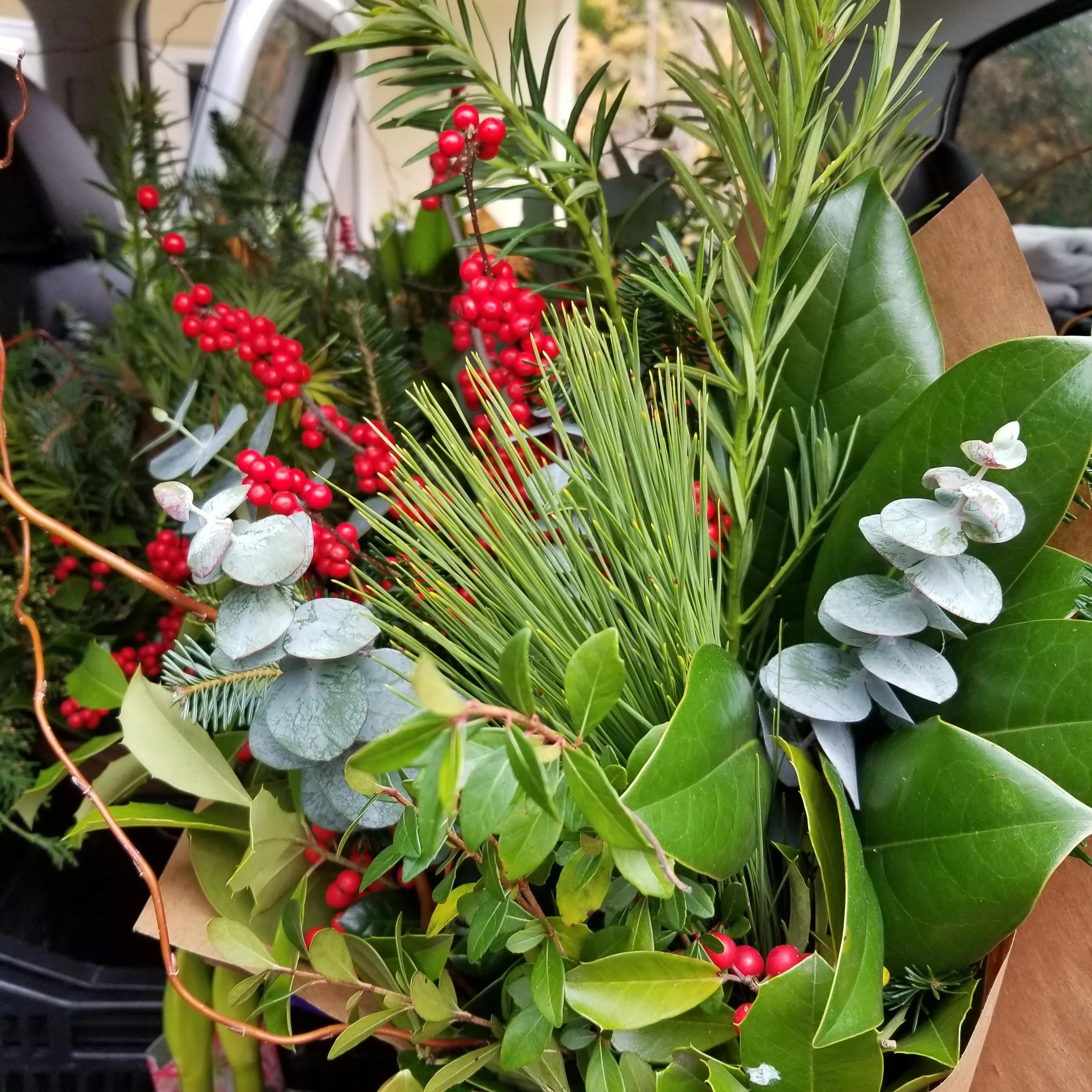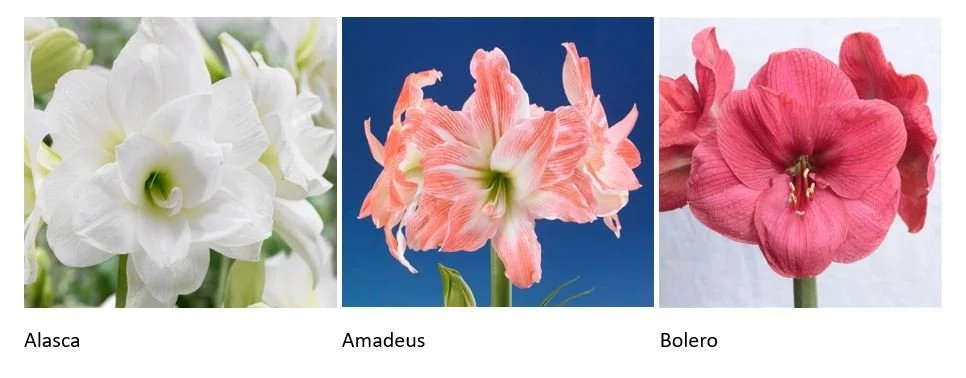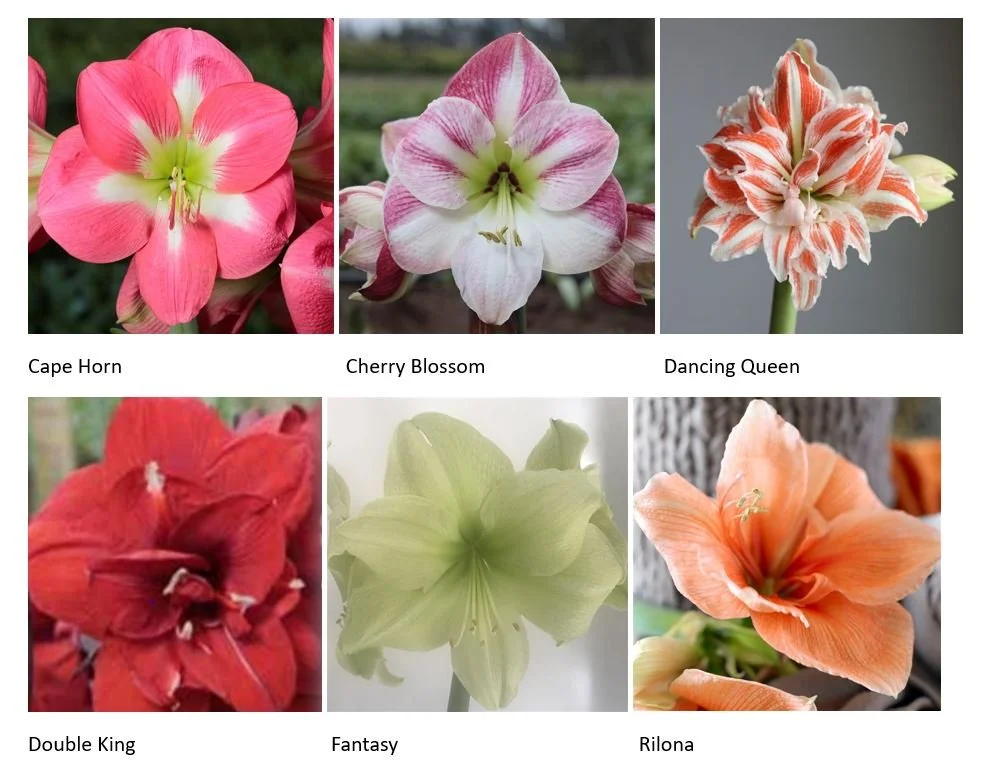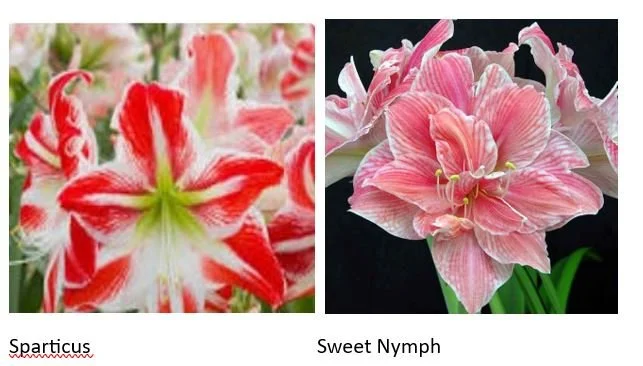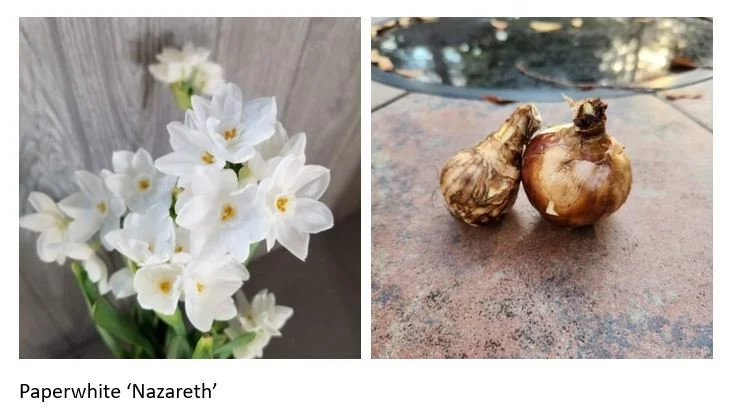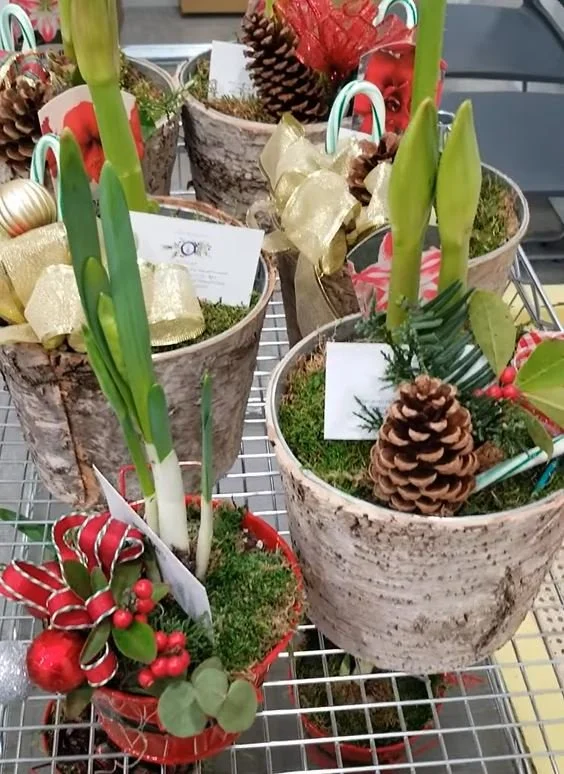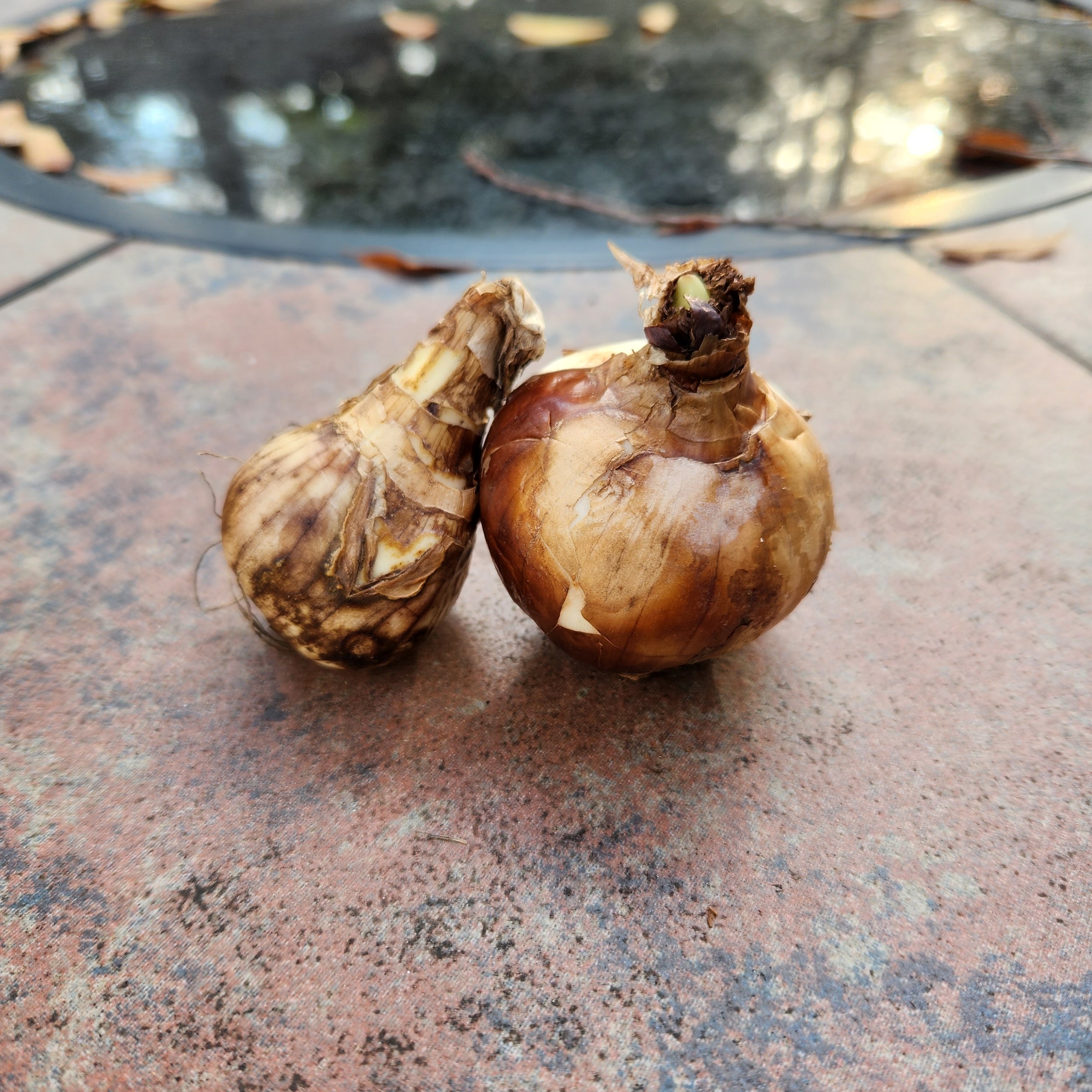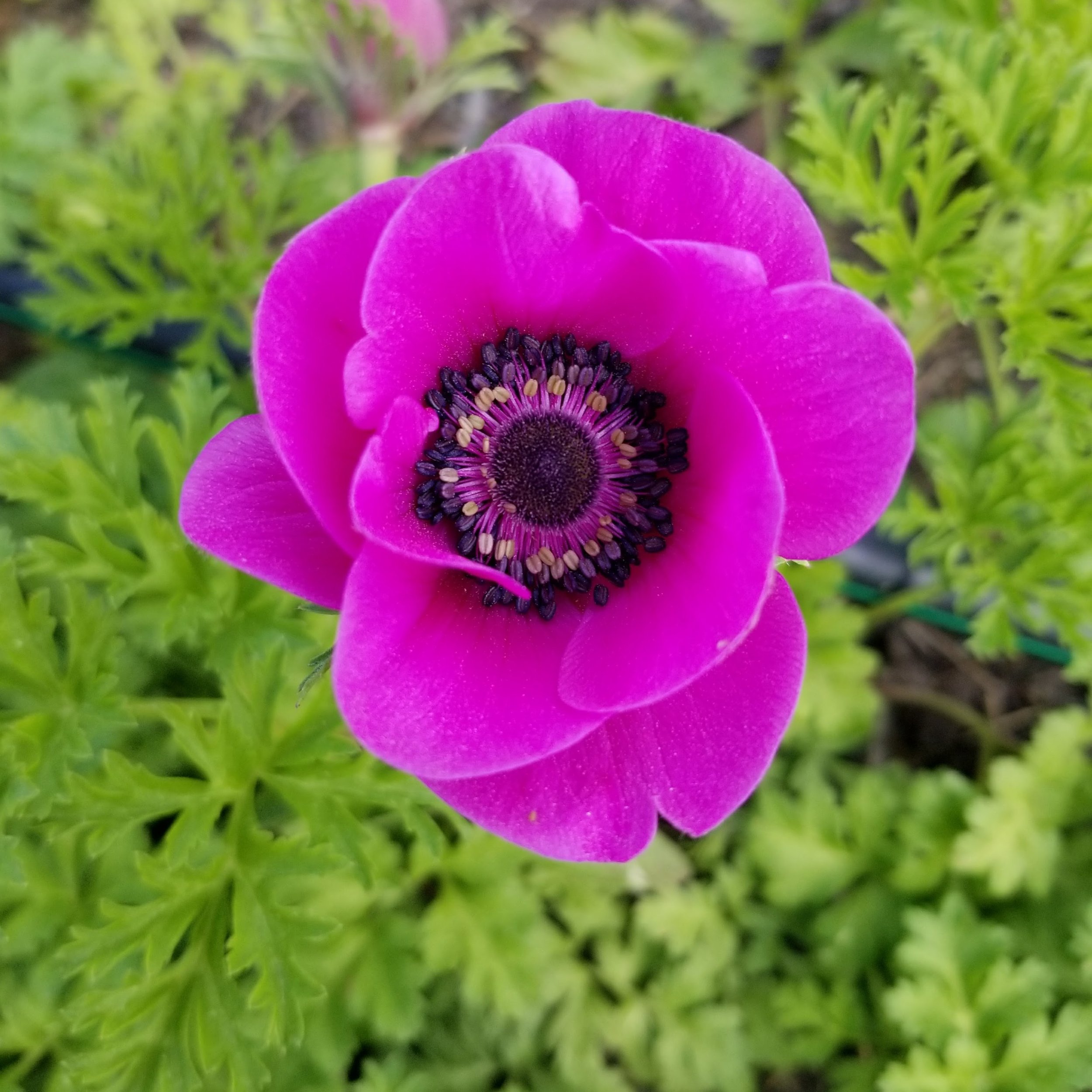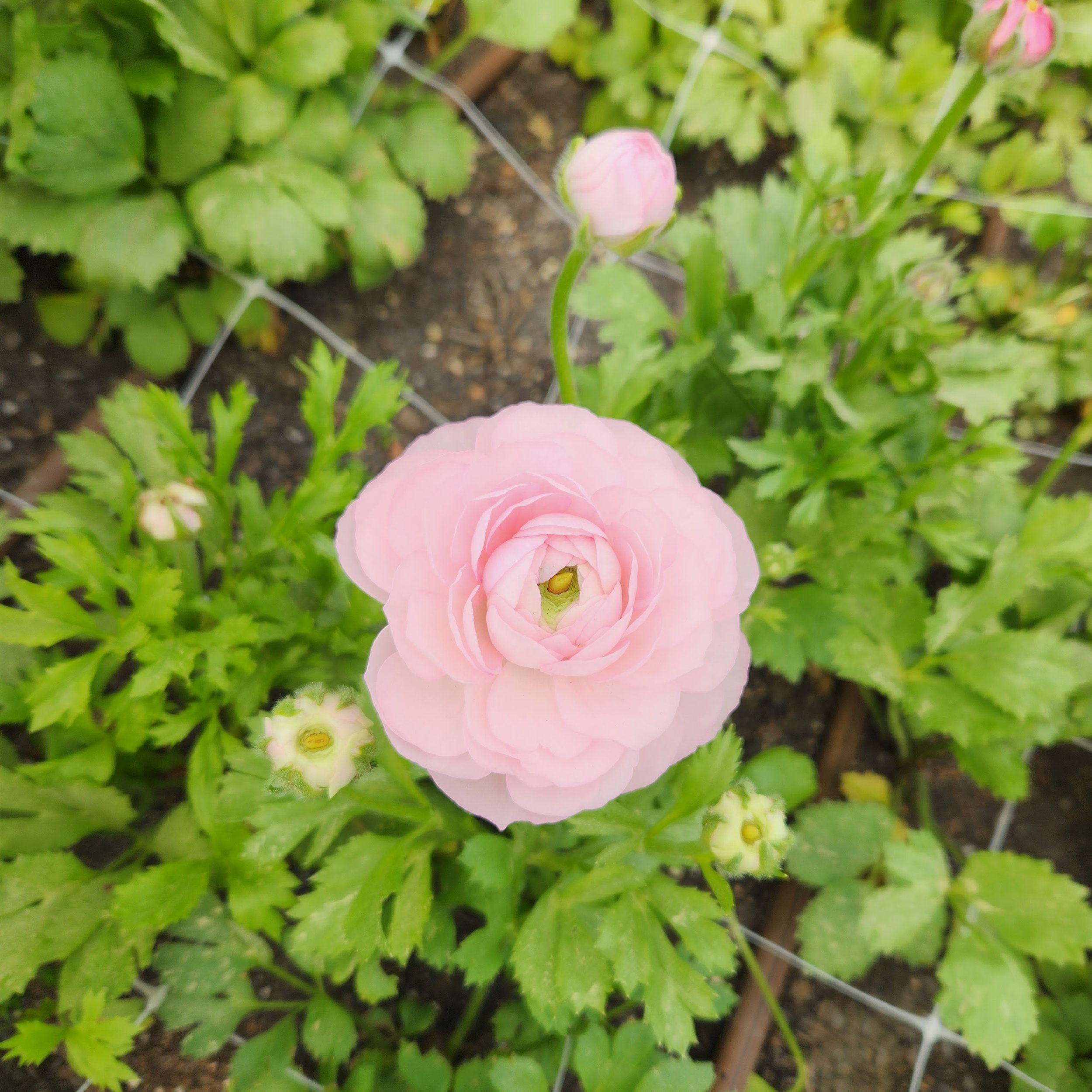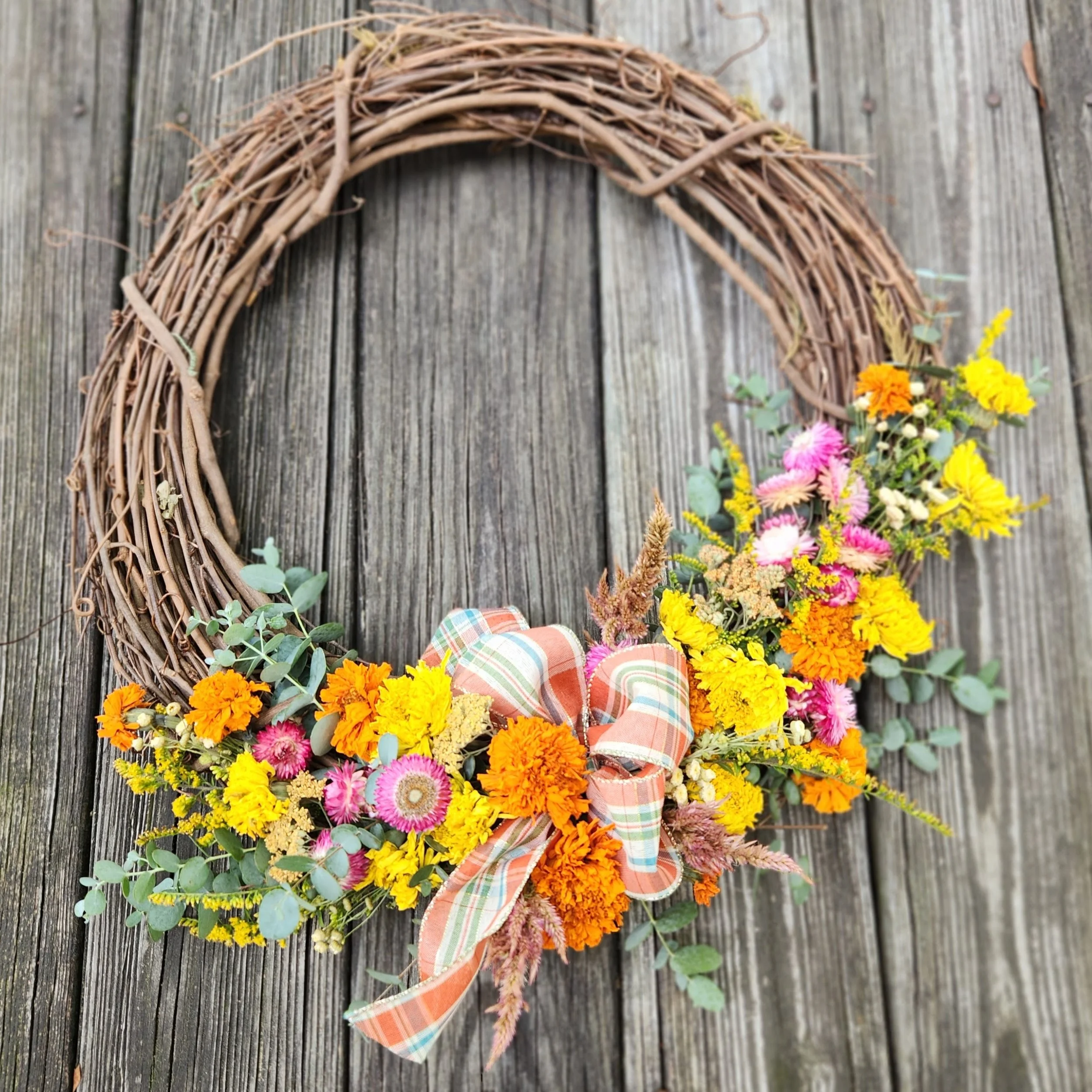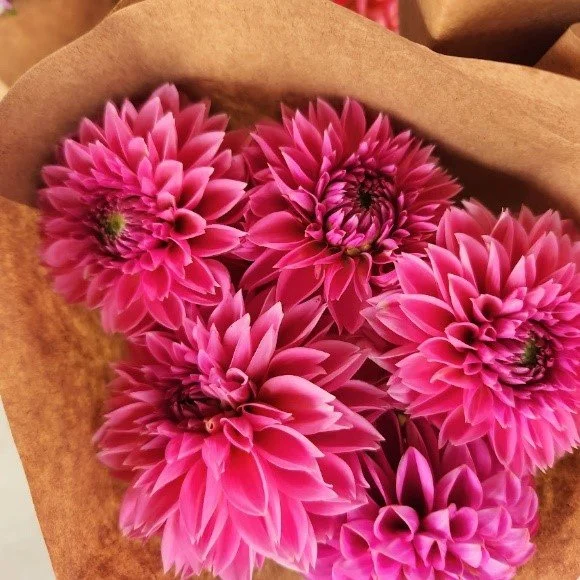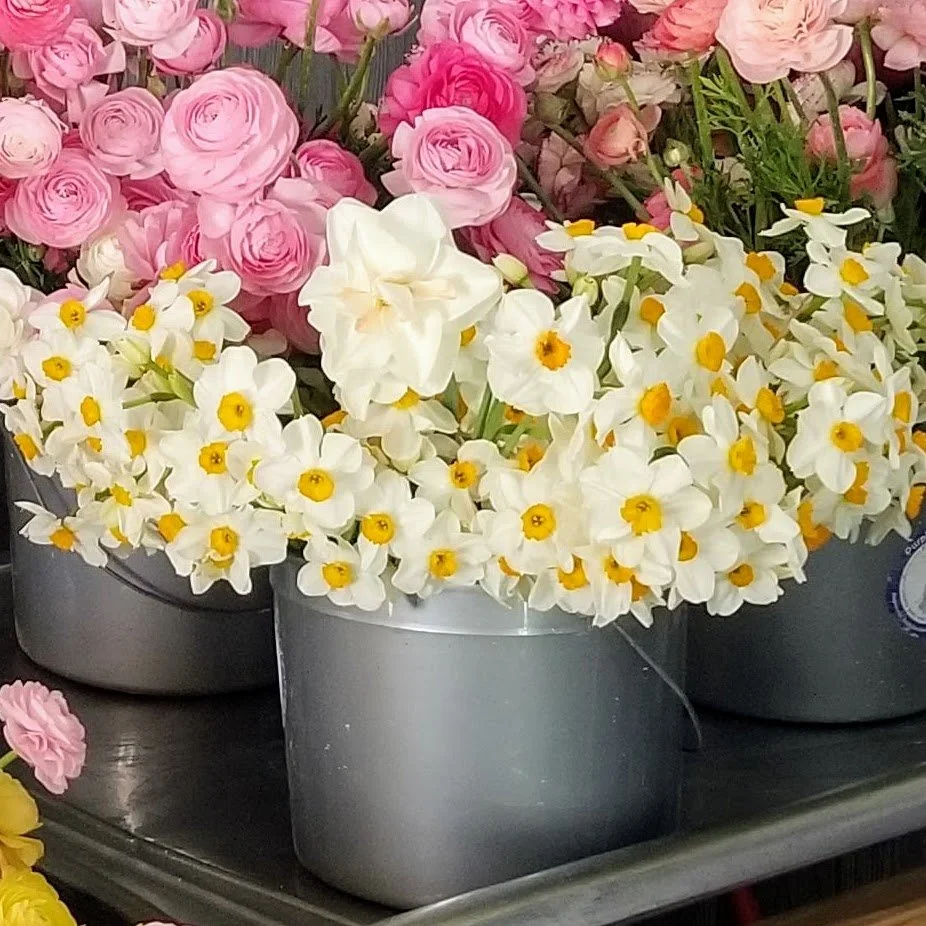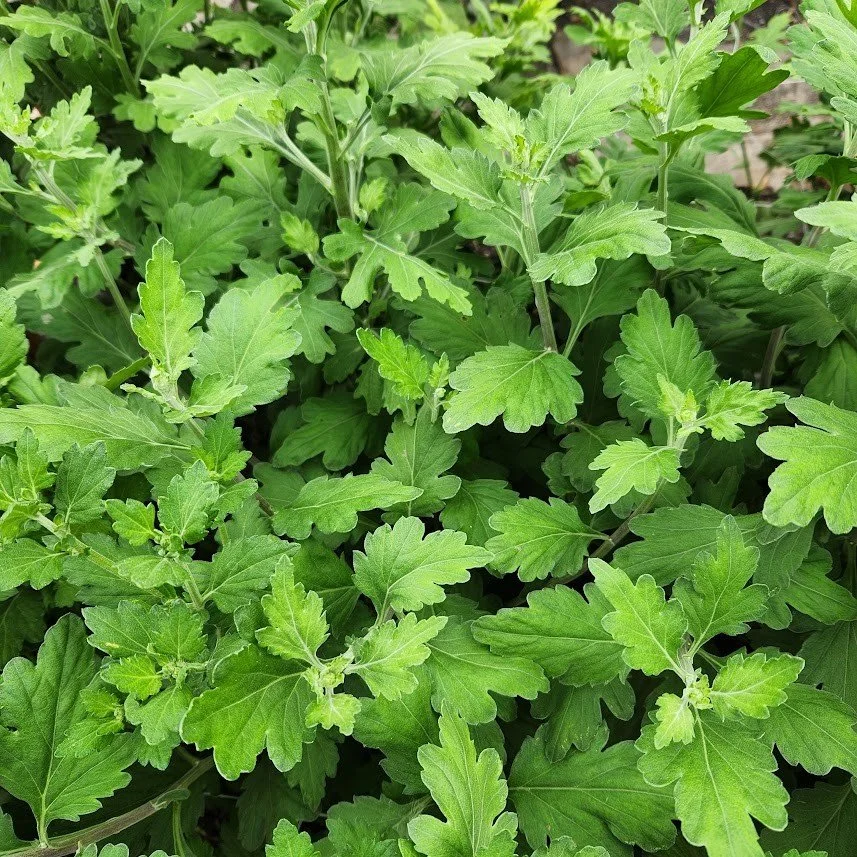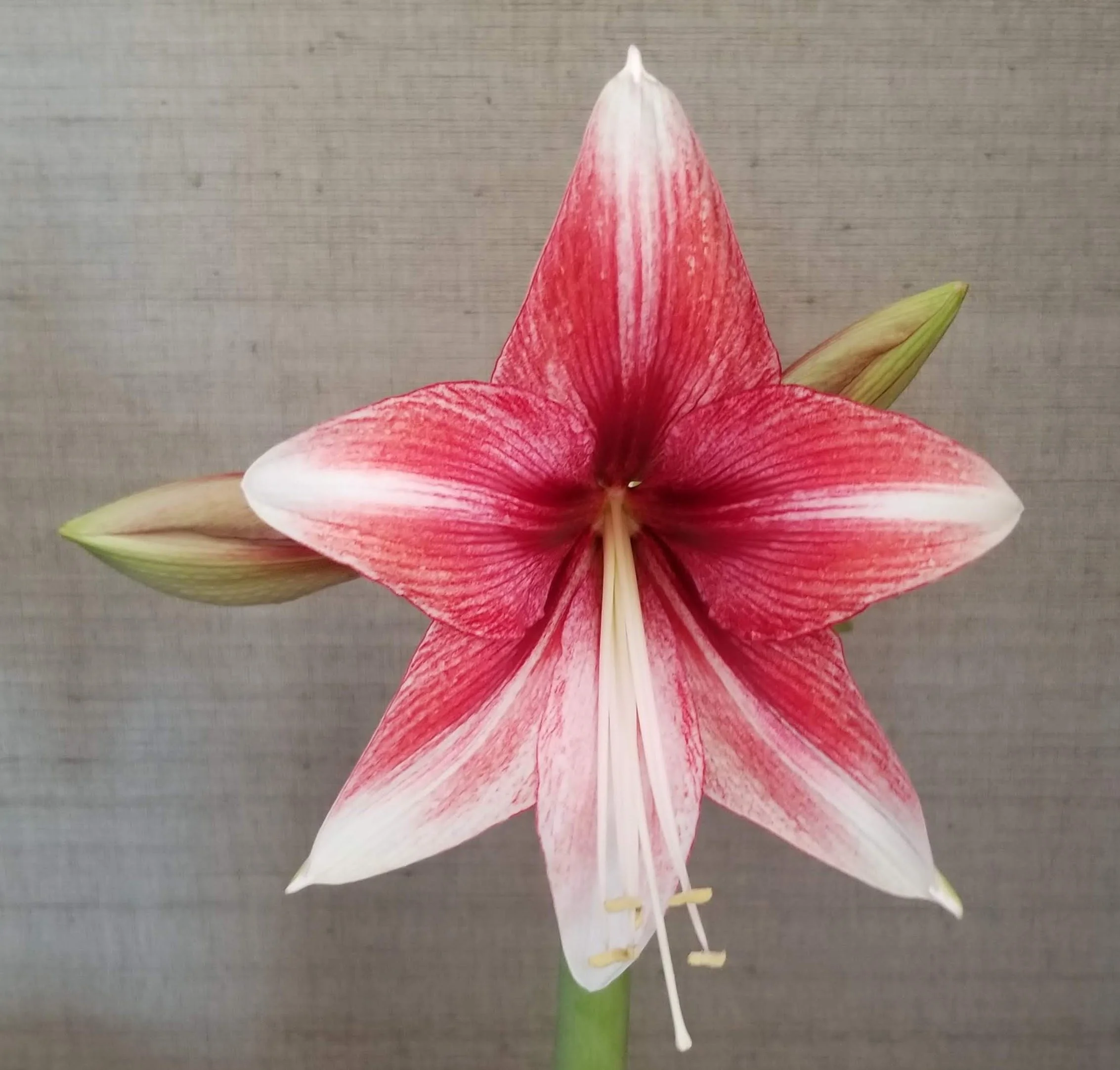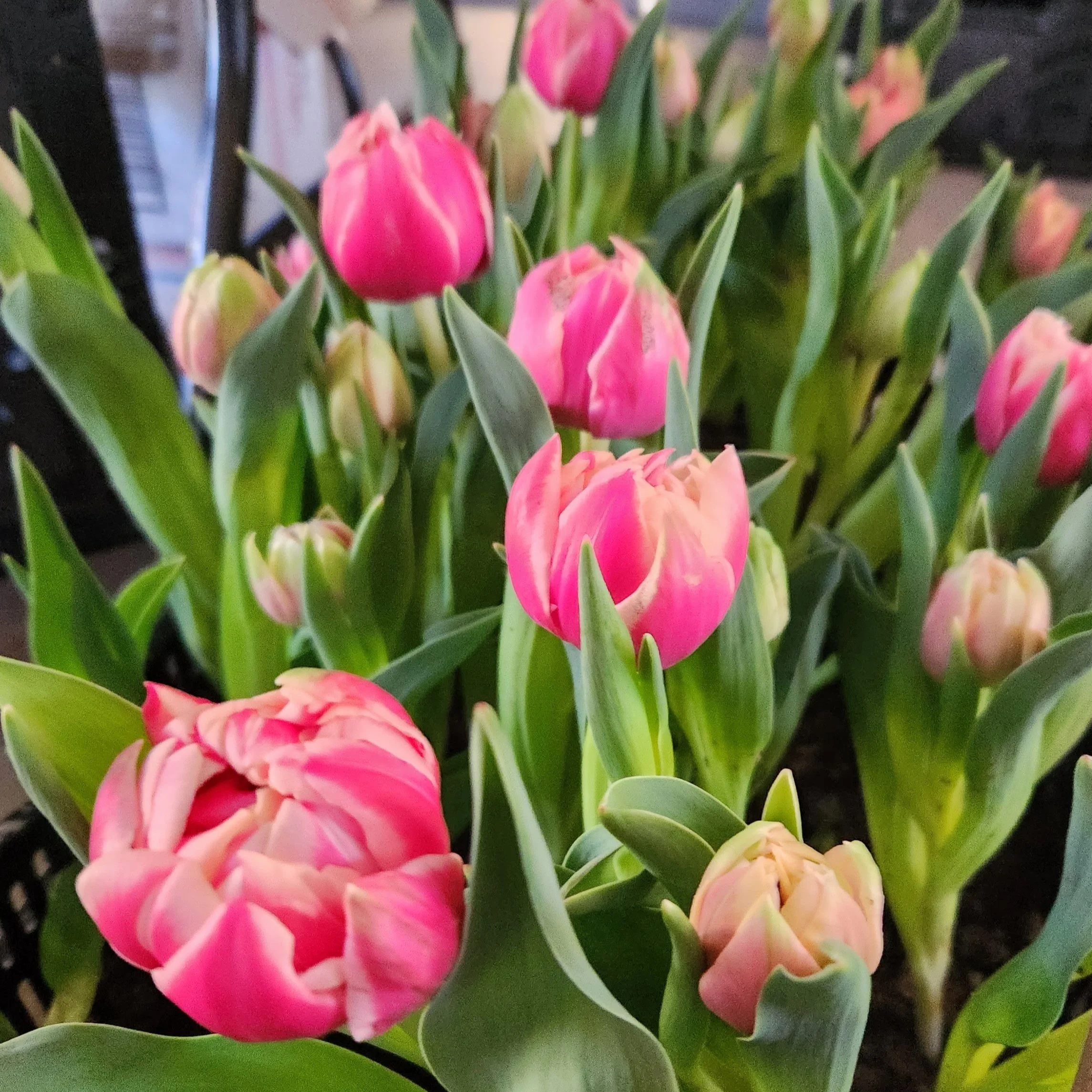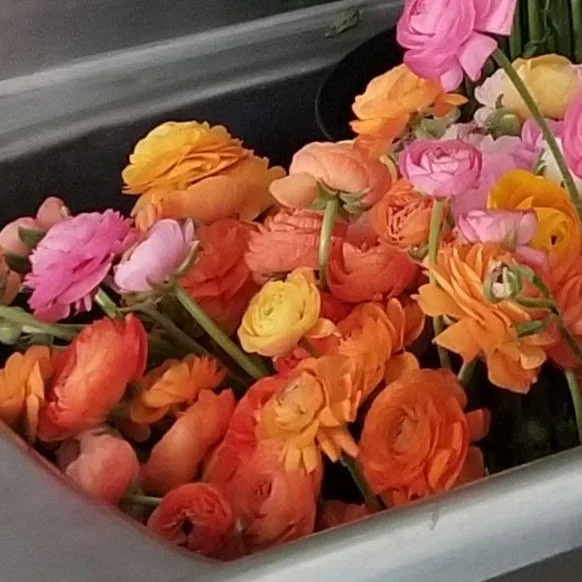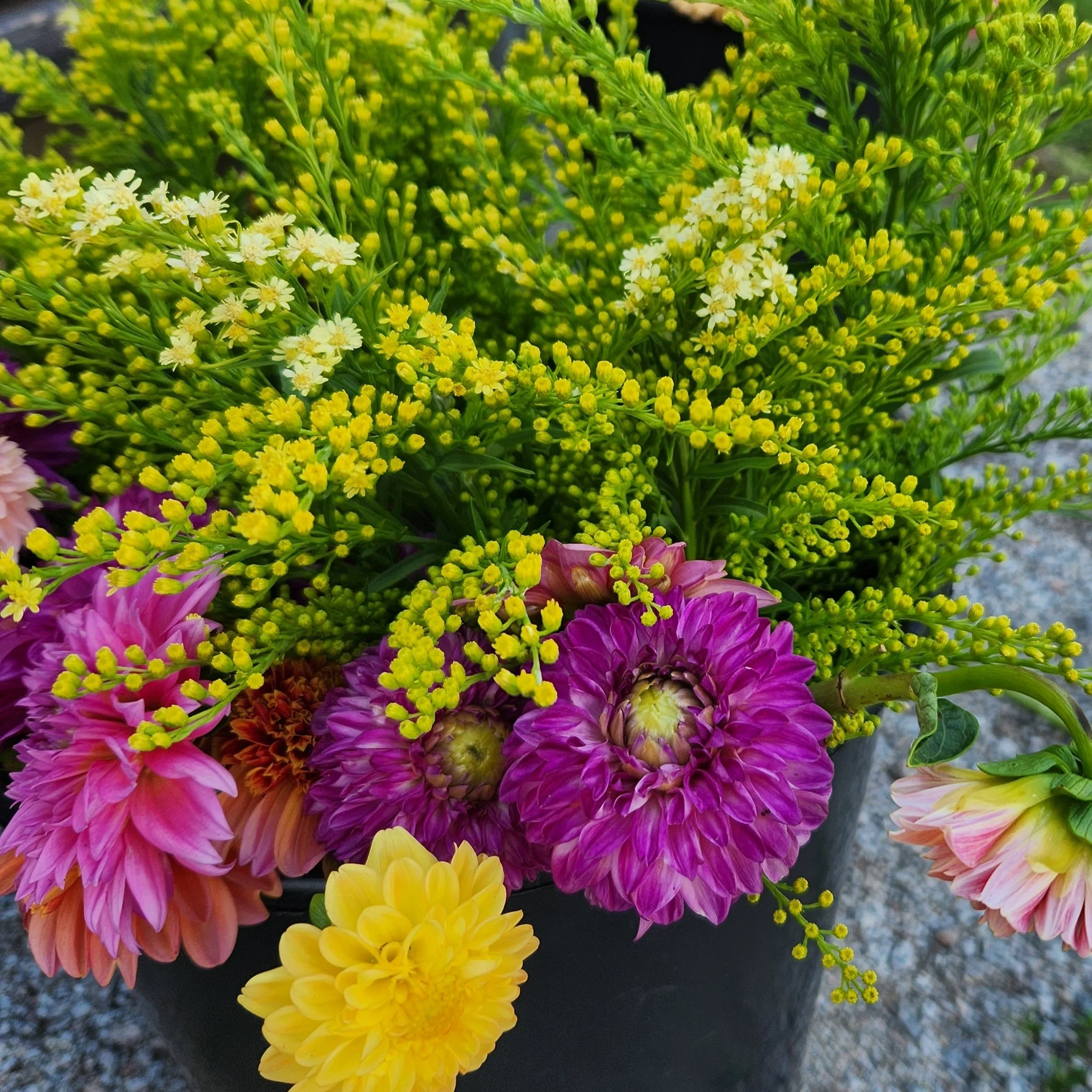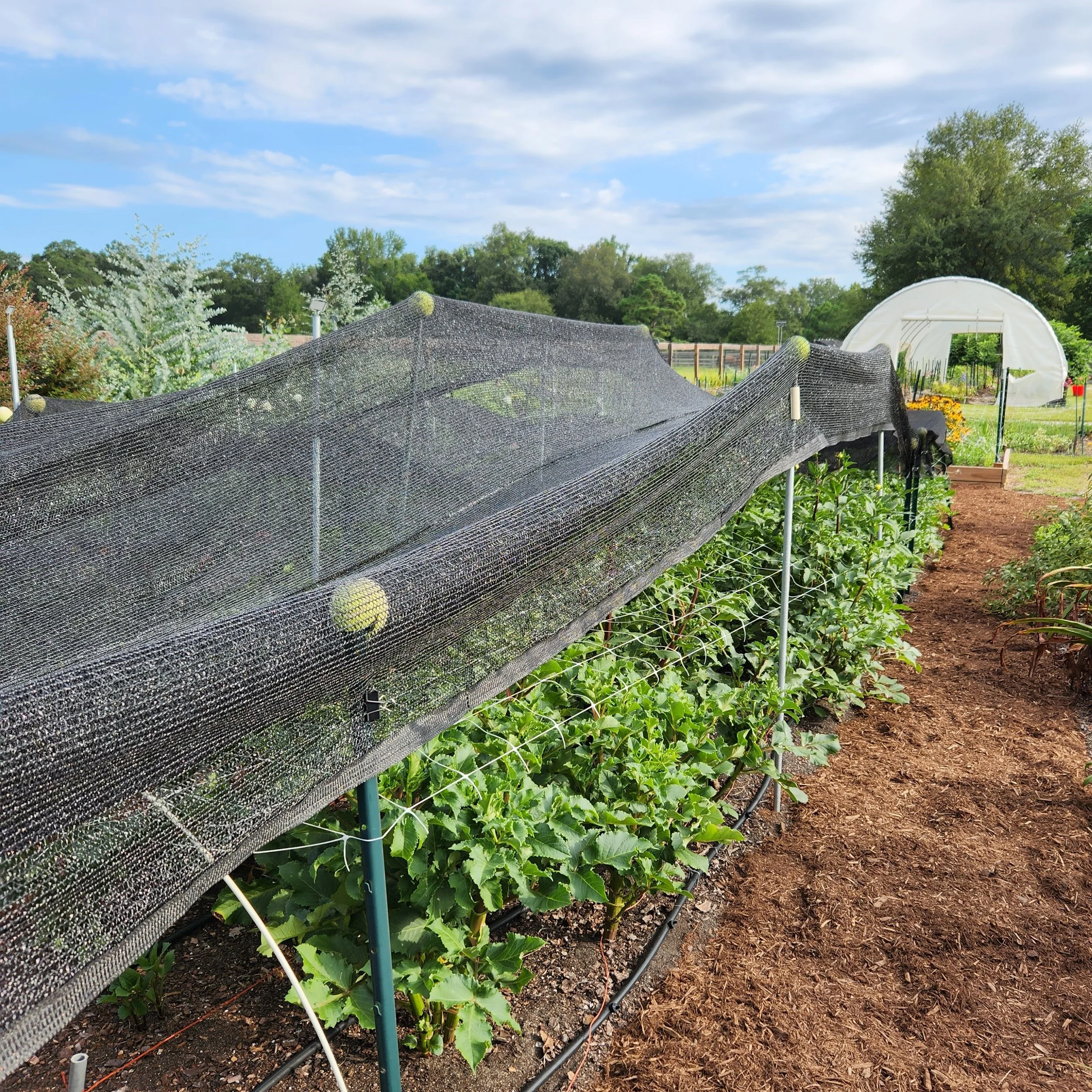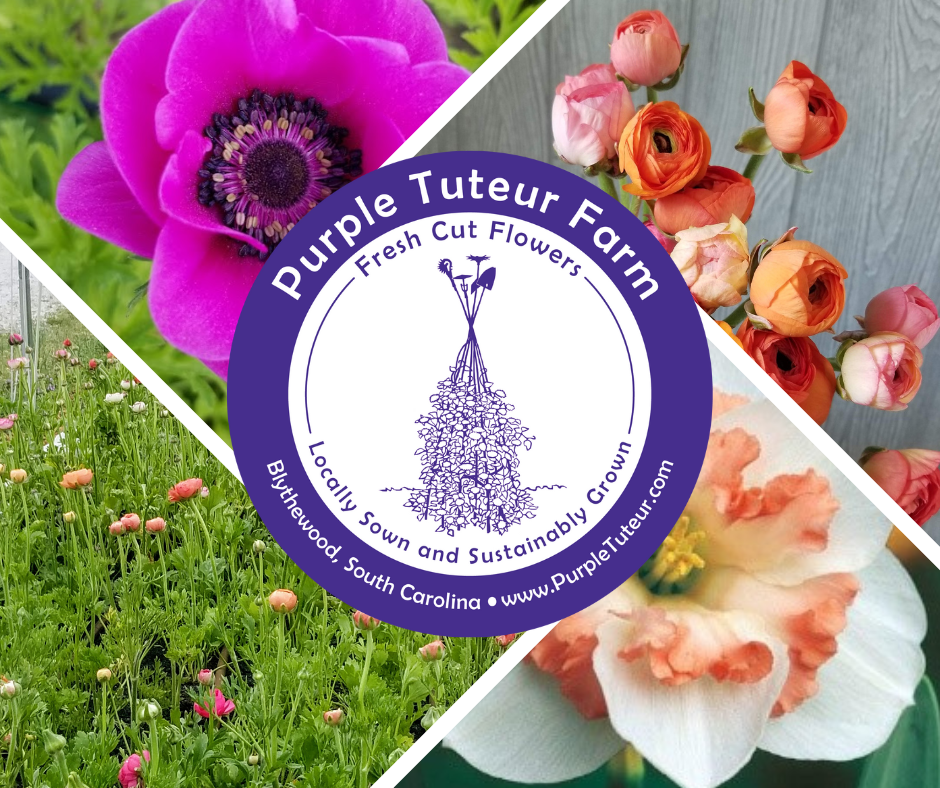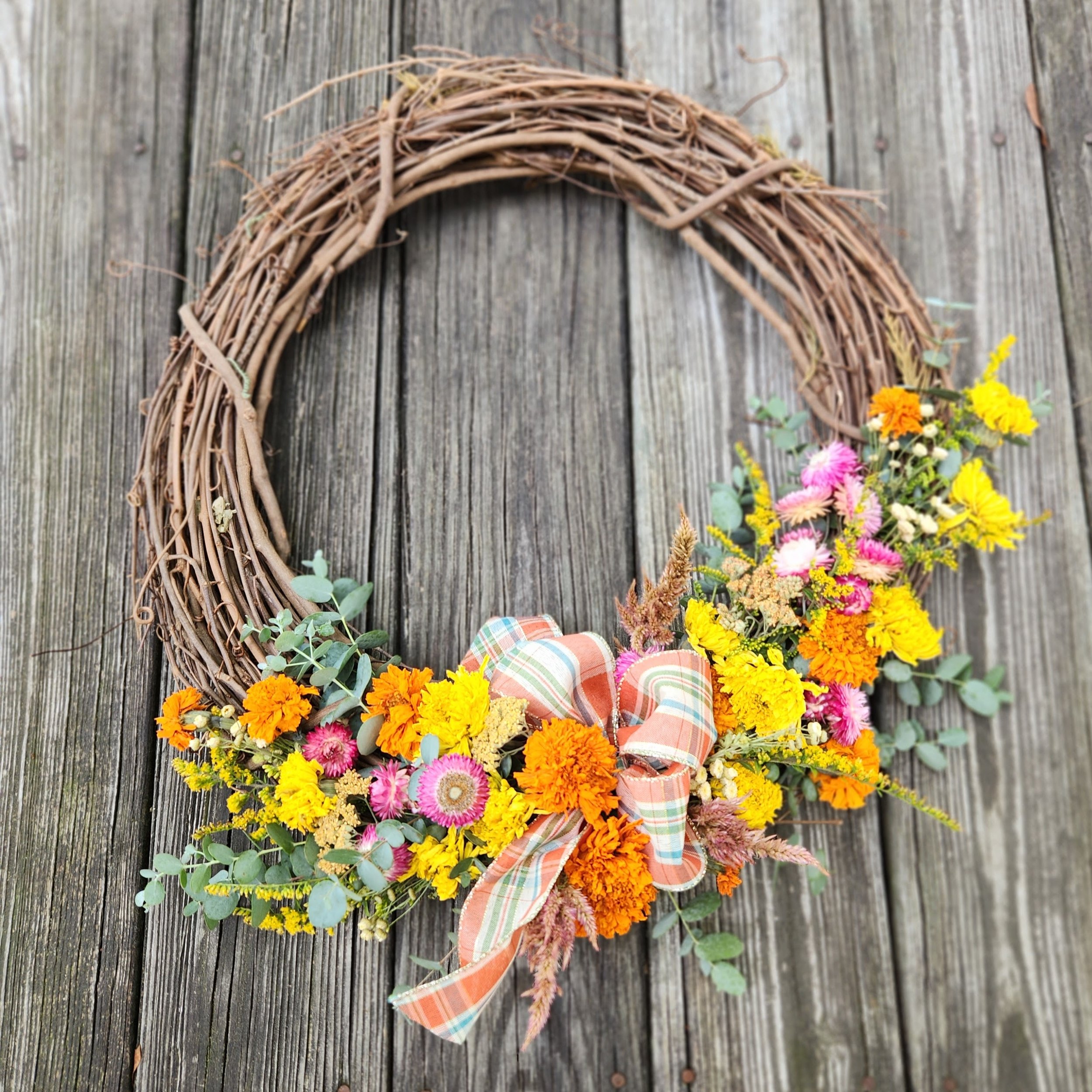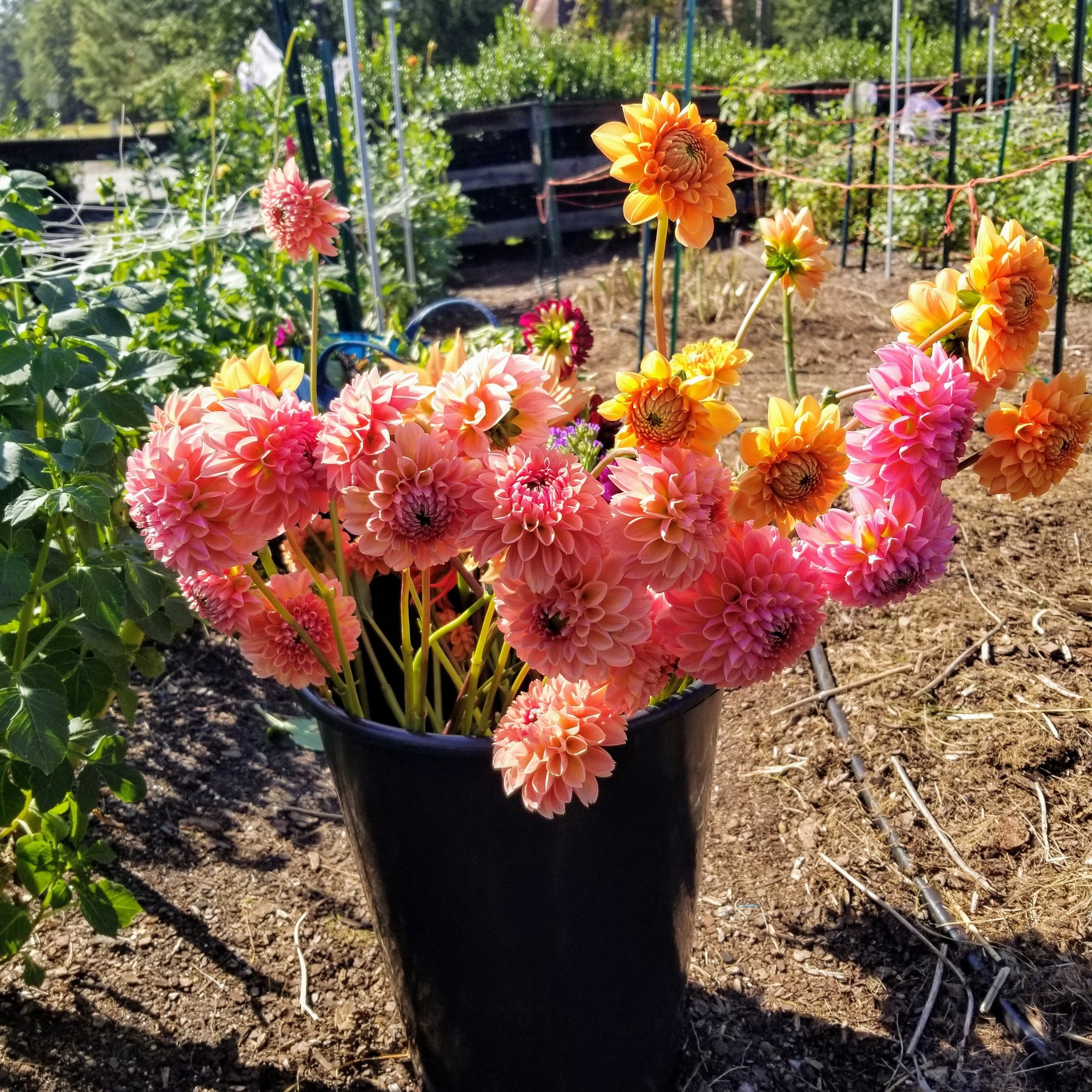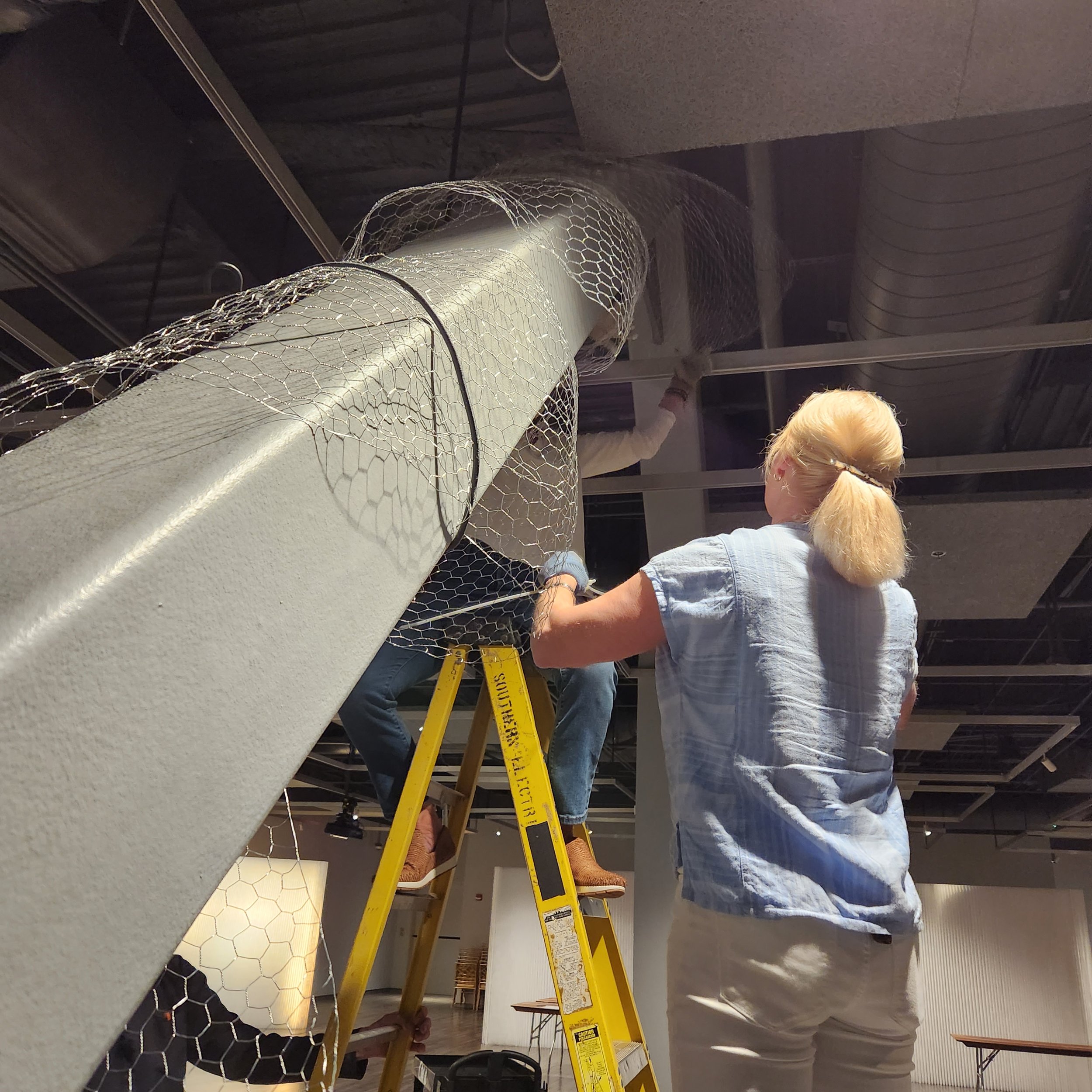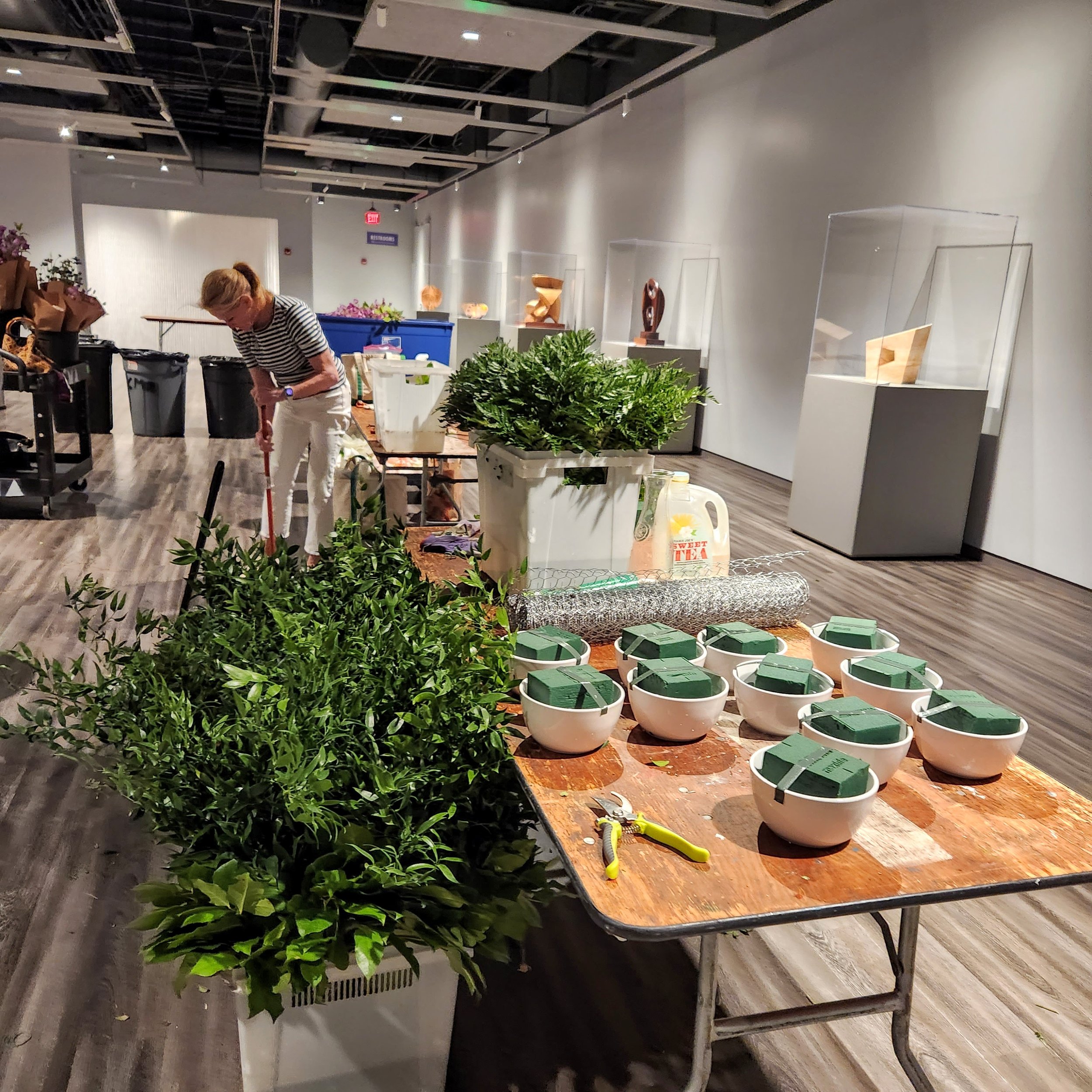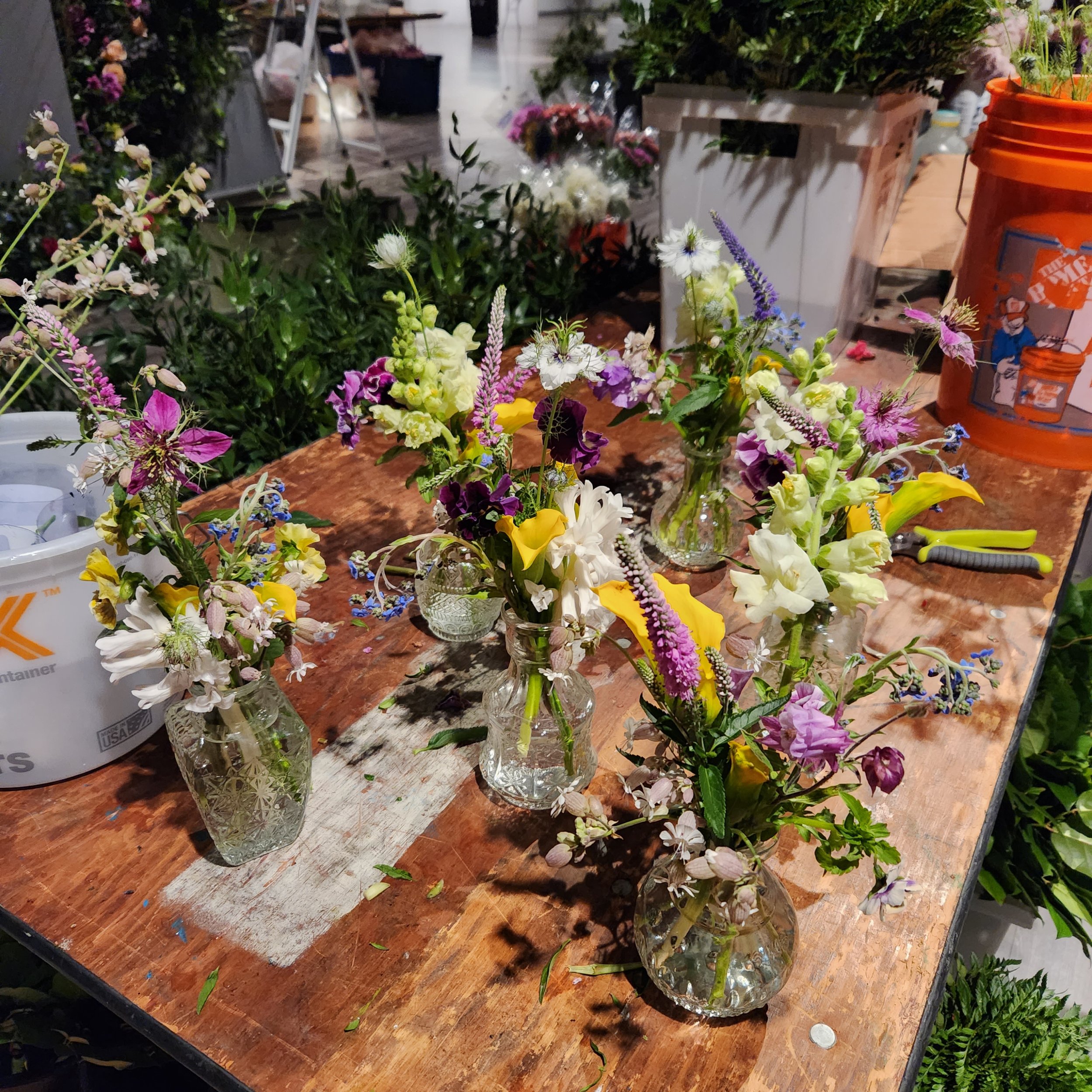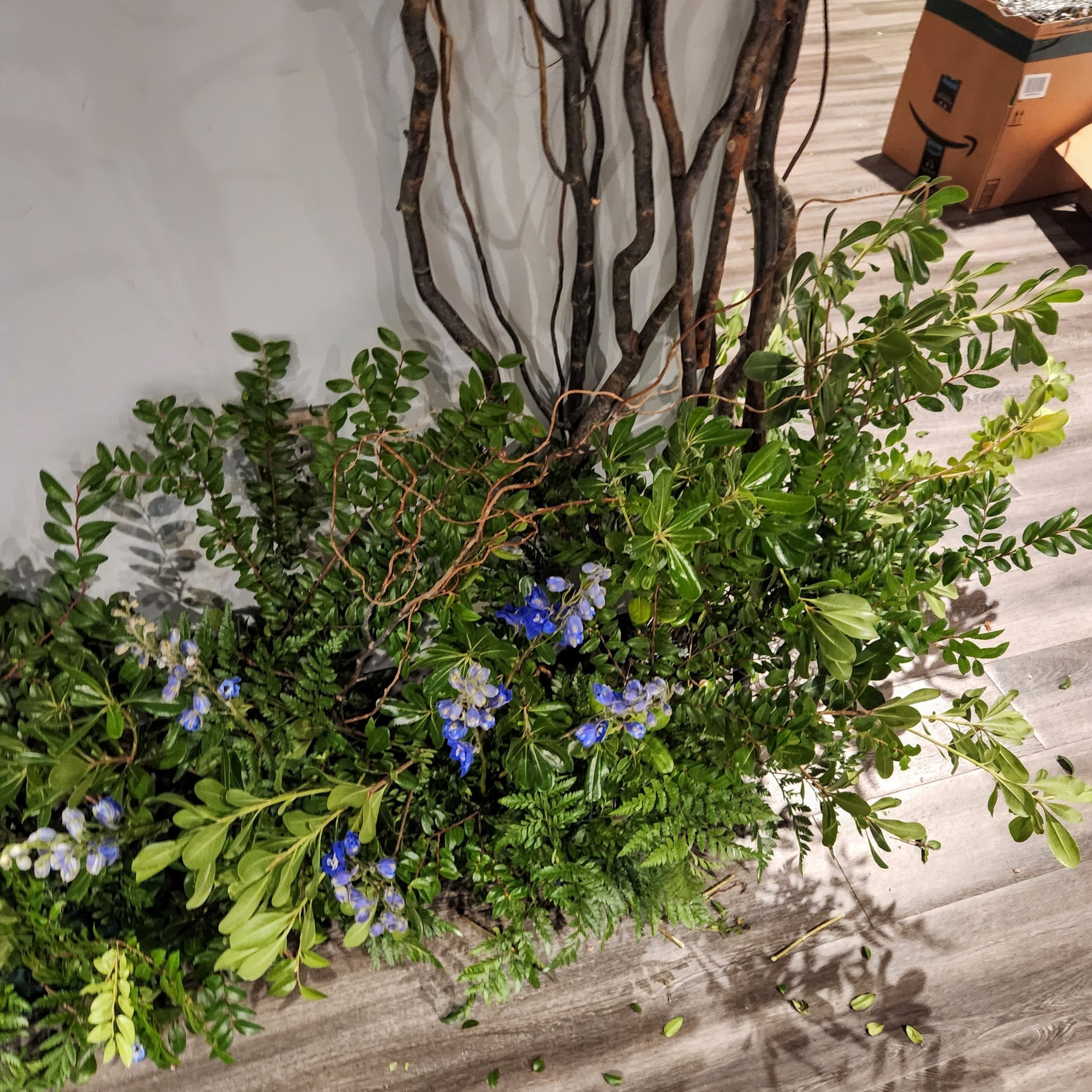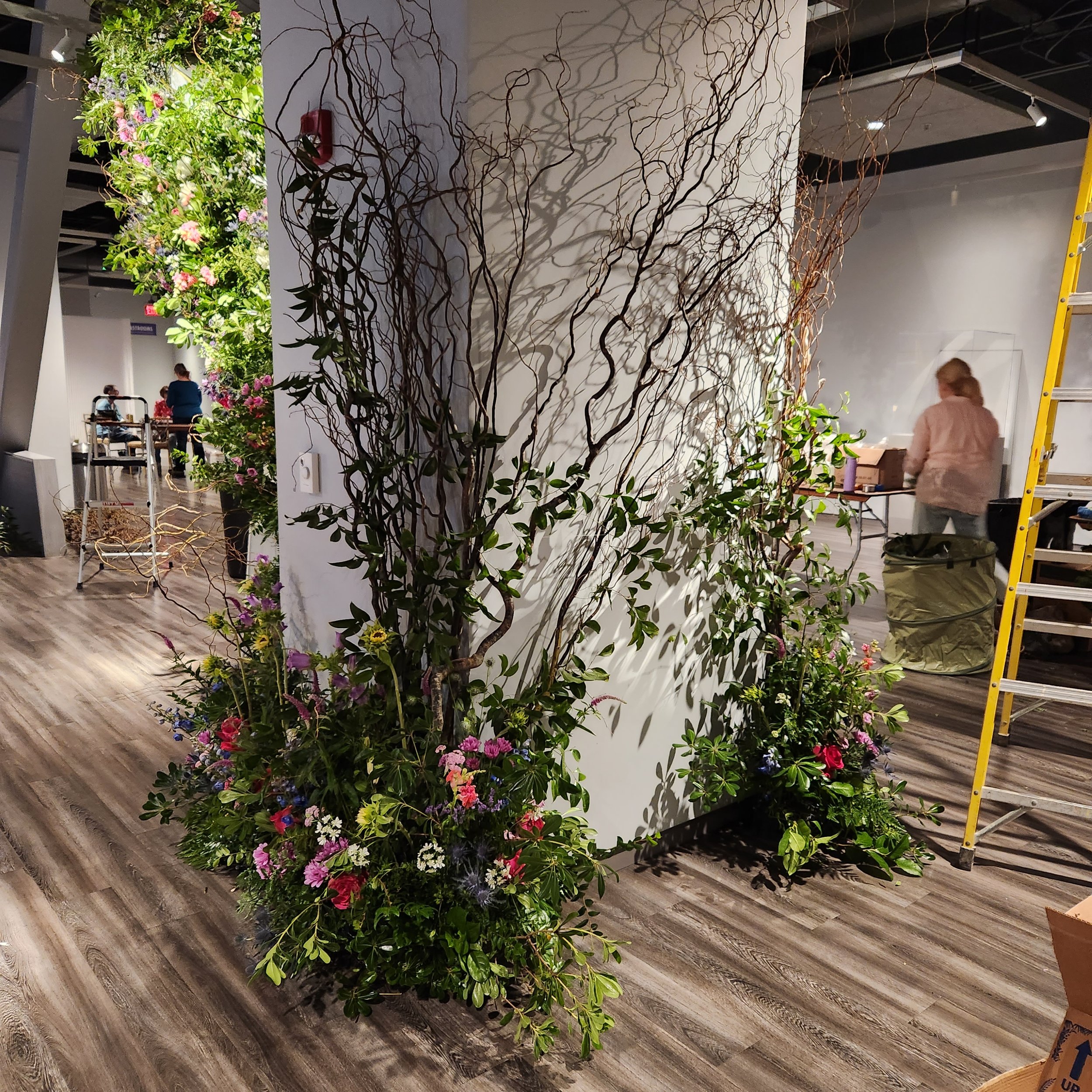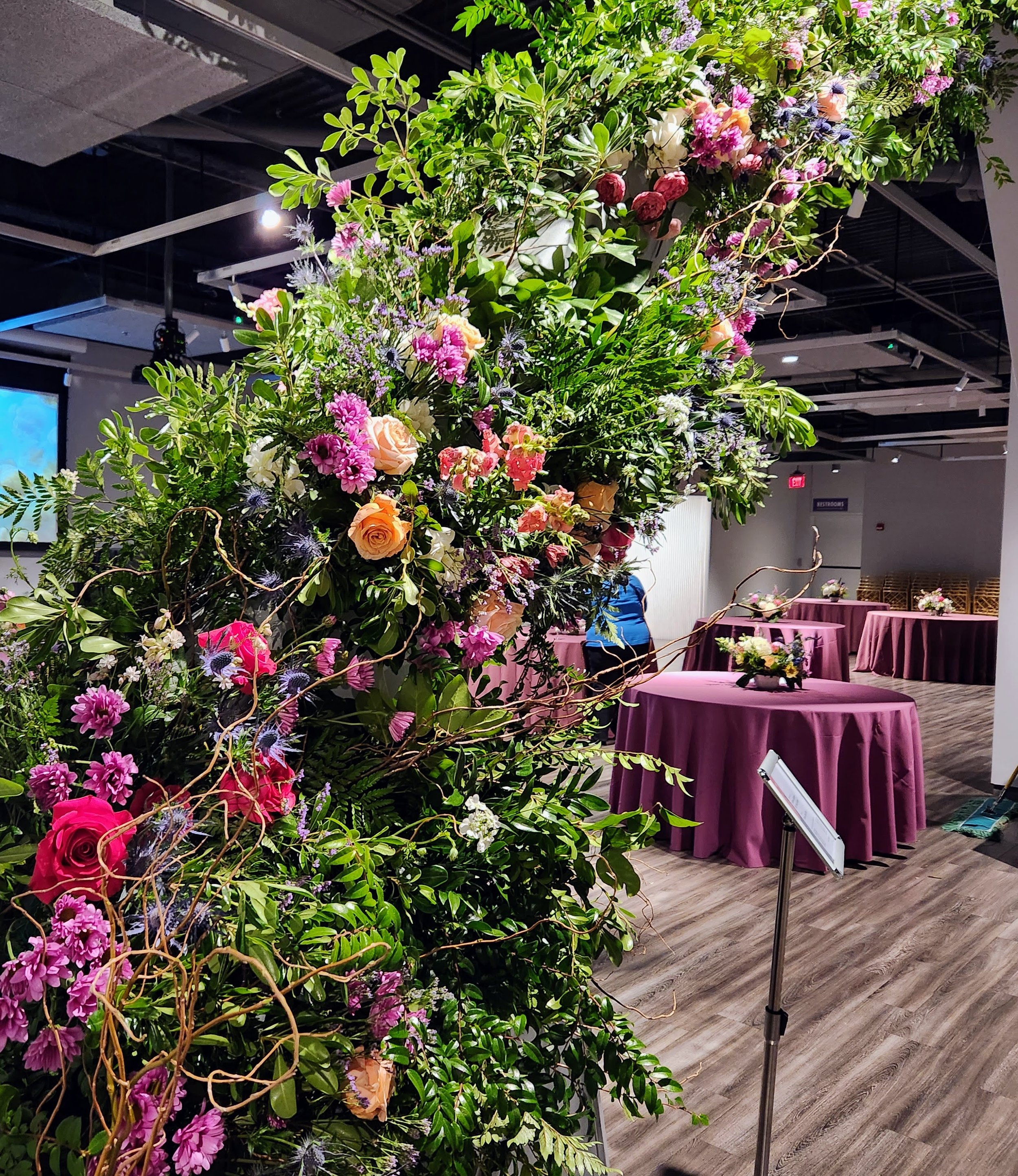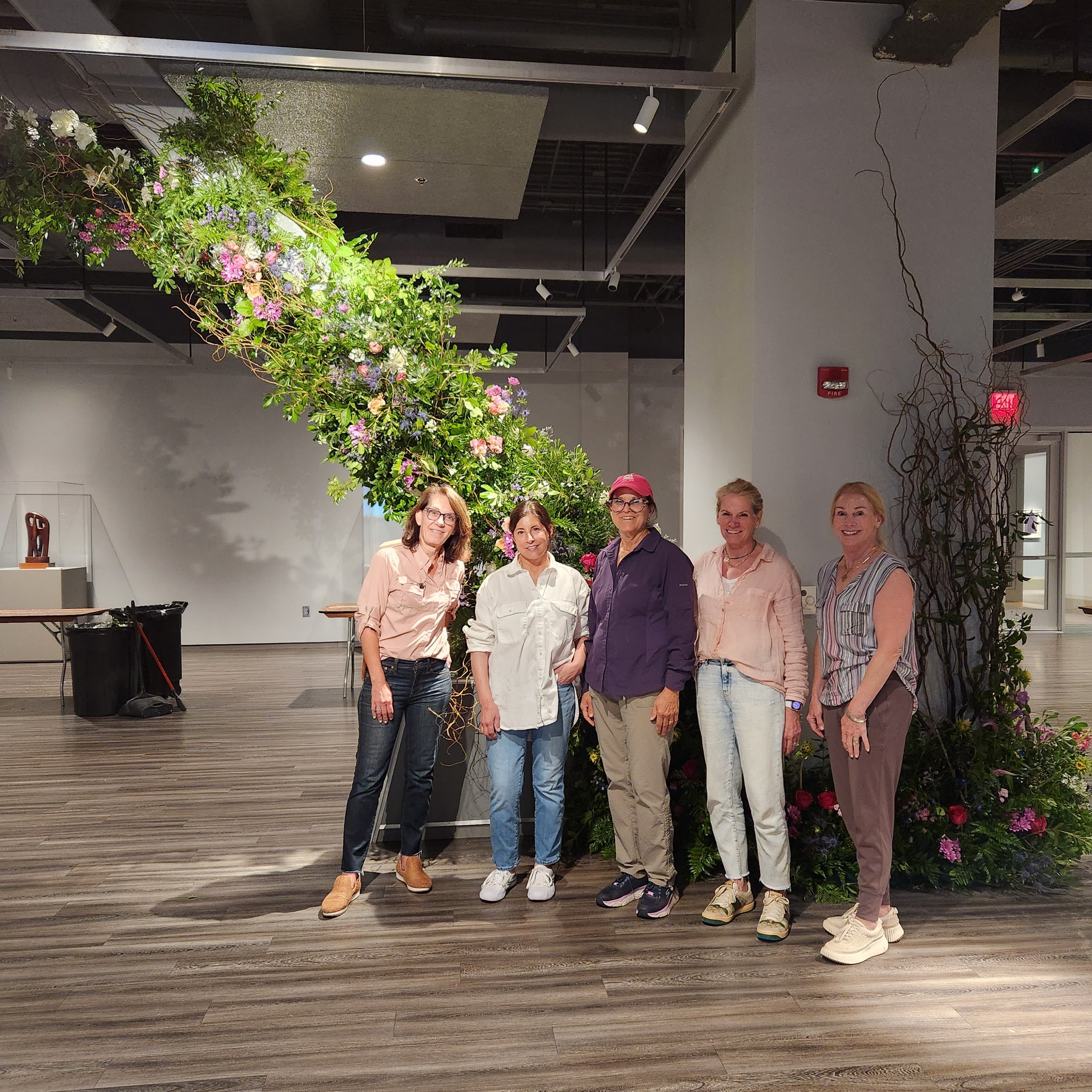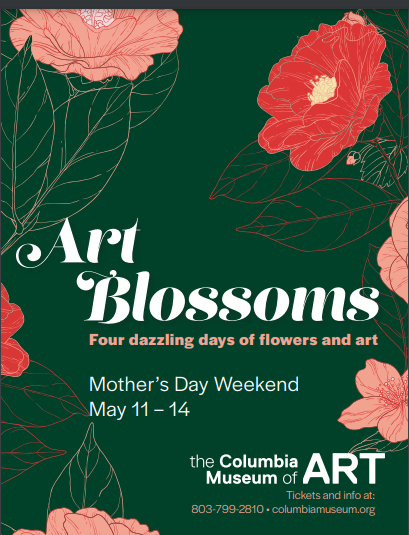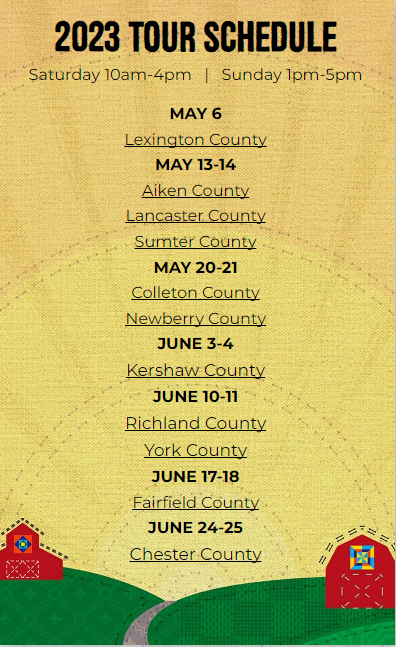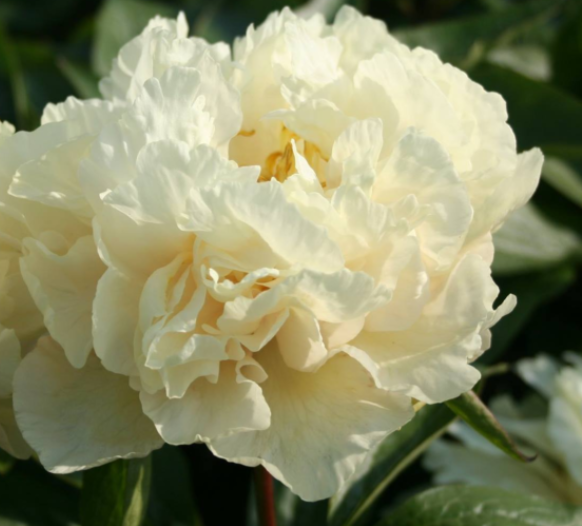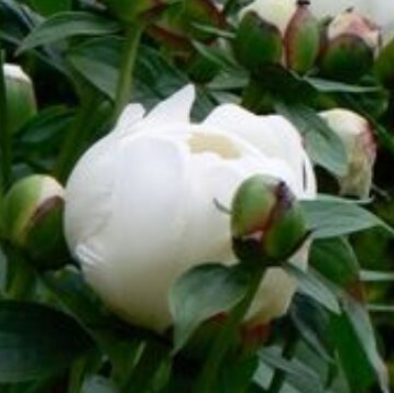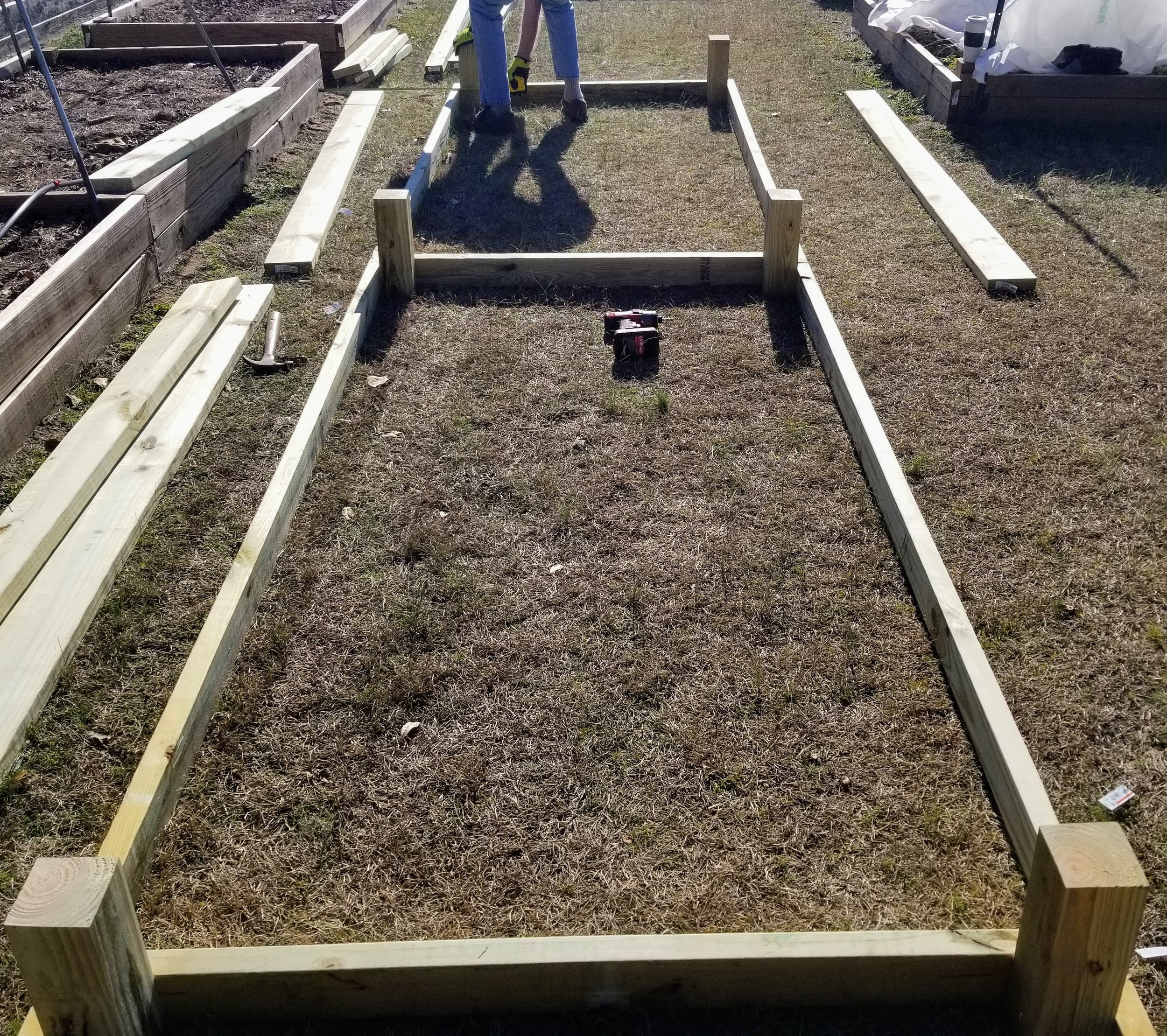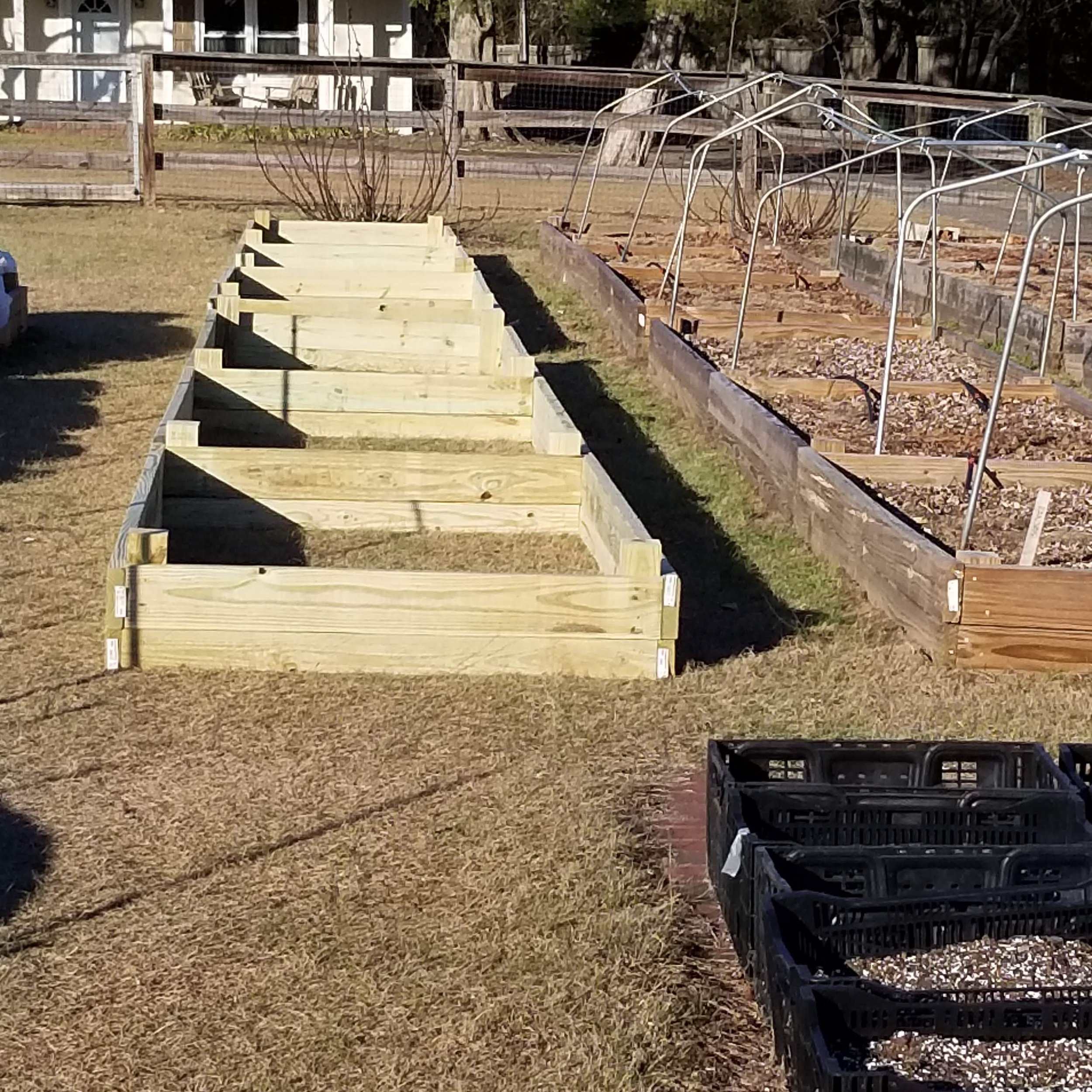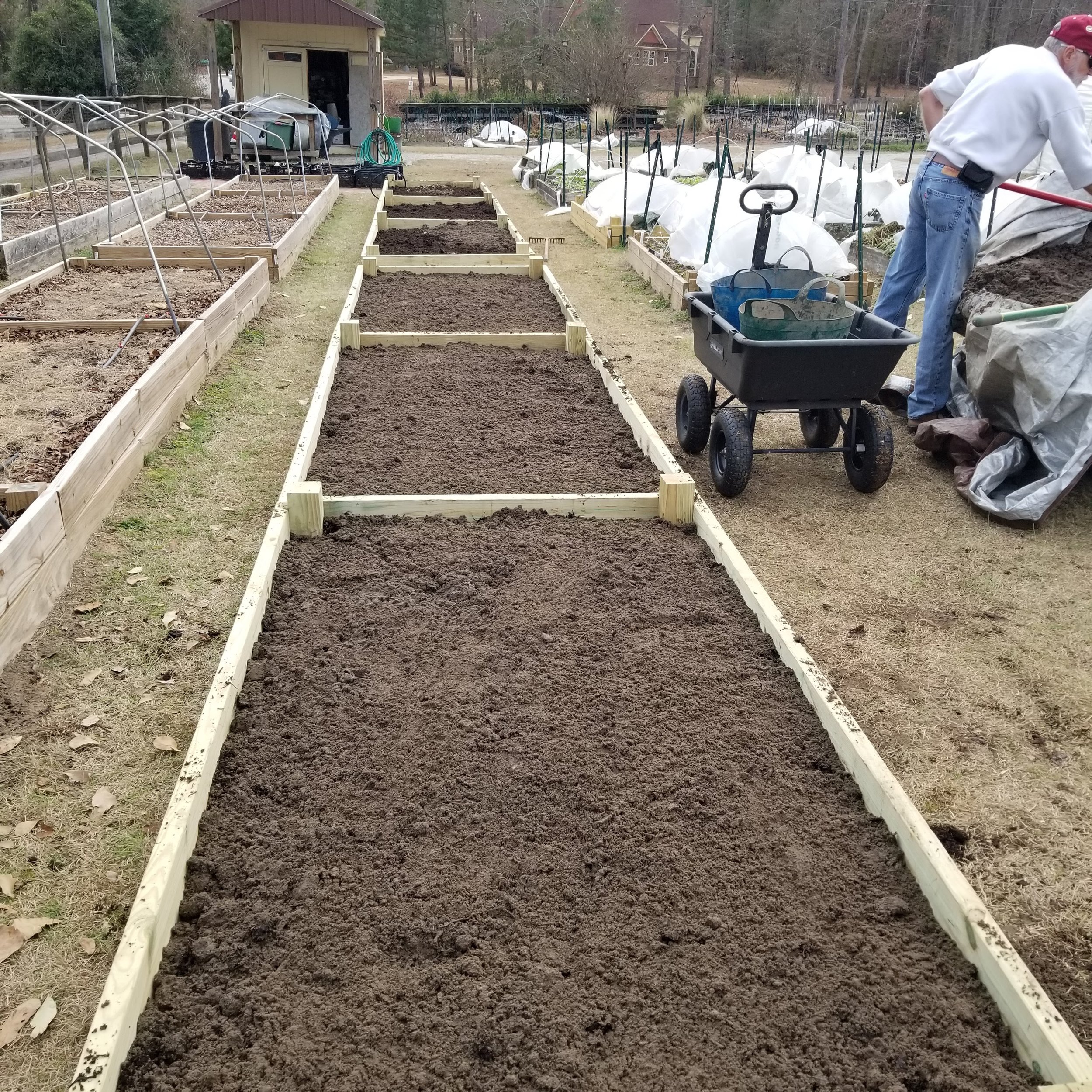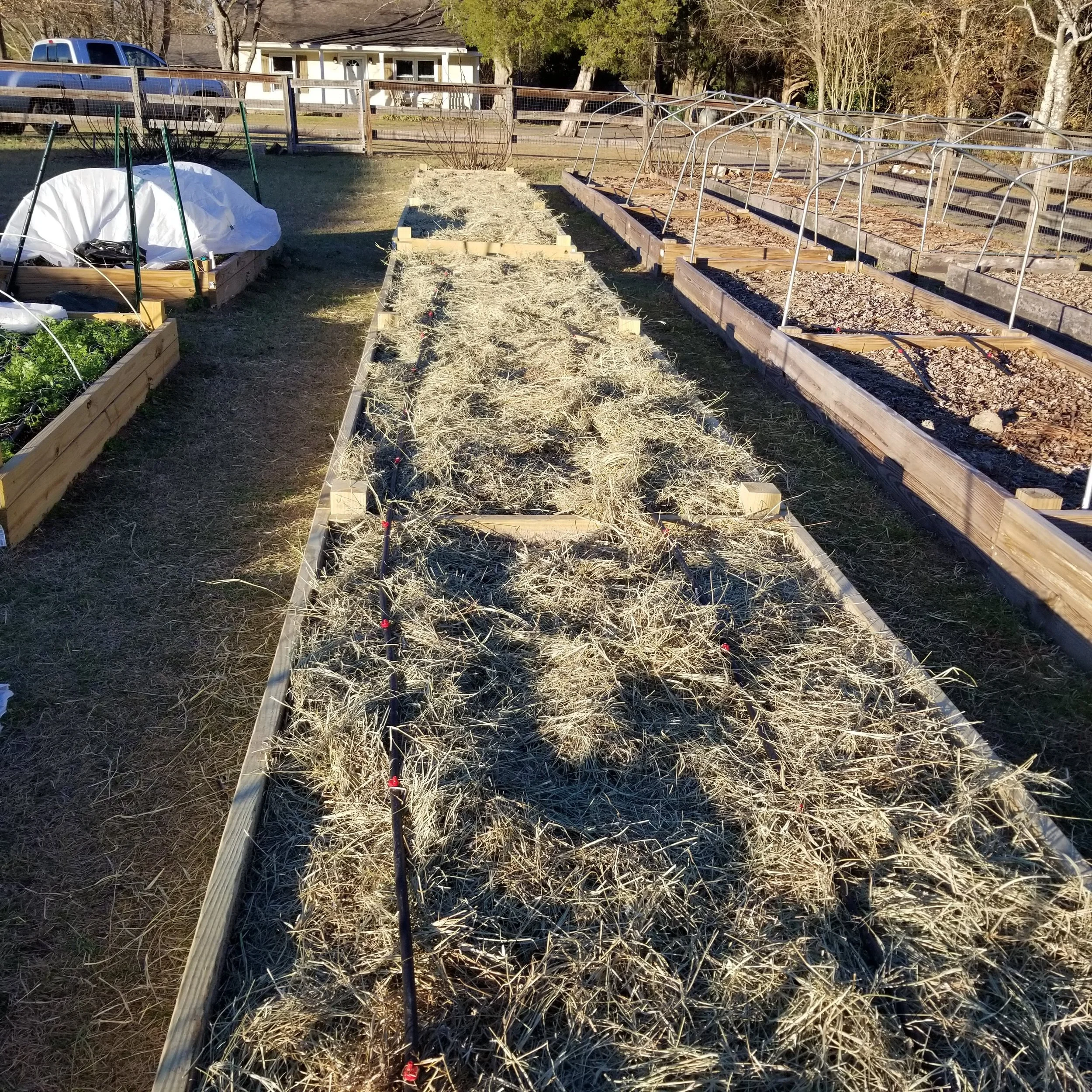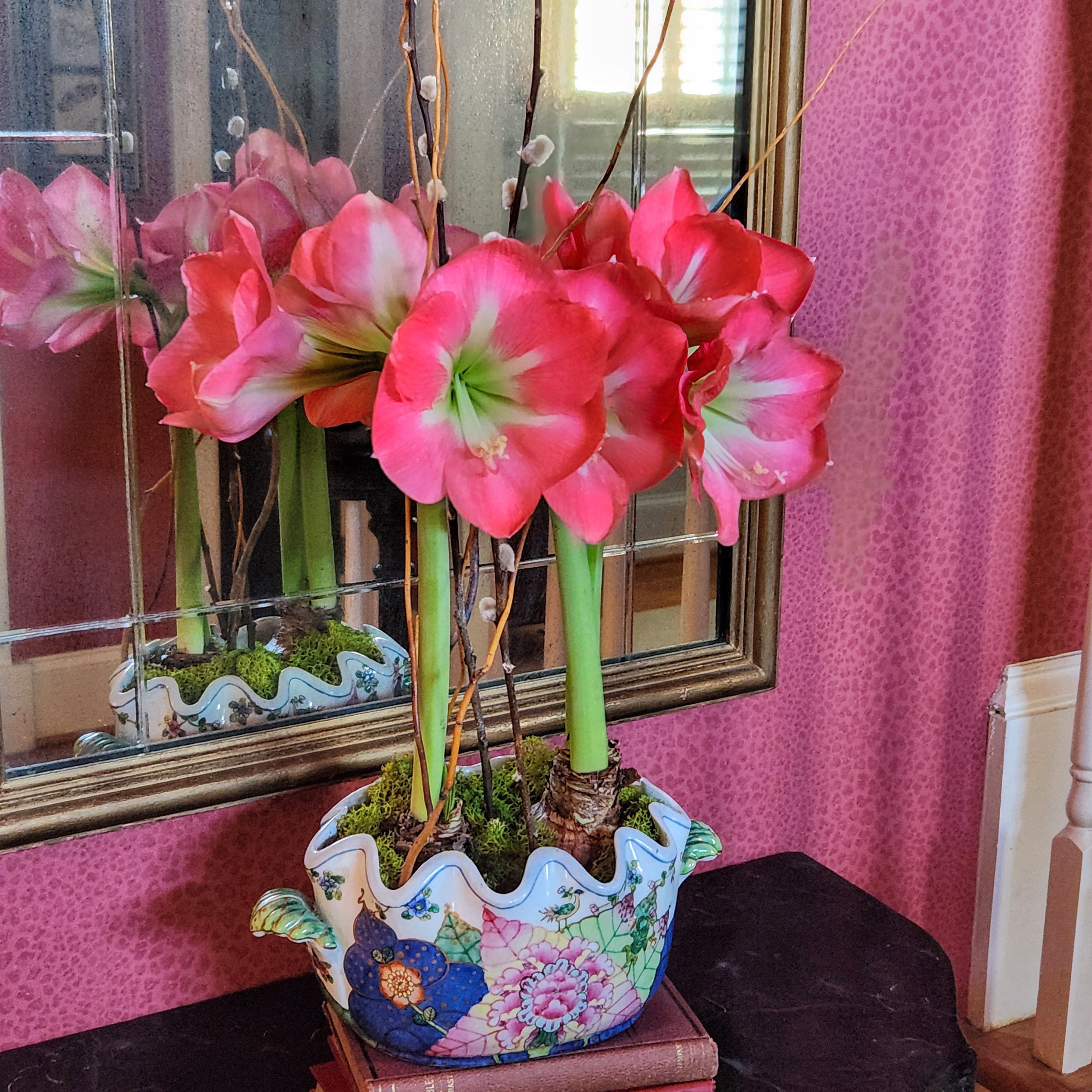
Would You Like to Visit The Farm This Year? Here’s How
We would love to see you at the farm for one of our scheduled classes or events. We will open up registration approximately 30 days before the class is held.
We’re kicking the year off with a new class on Forcing Bulbs and registration is now open! Here are the specifics.
Growing Bulbs Indoors For Winter Blooms – On Farm Workshop
Friday February 23 - 10 am to noon
If you like to keep flowers in your house, winter can be a challenge. It is too cold for cutting much from the garden. Fortunately, there is a wonderful alternative available by forcing bulbs. The world of bulbs offers a great variety of shapes and colors to delight you at home before spring arrives.
Once you have learned how to make this happen, you can unleash your creativity to create interesting pots of one or many varieties at home. Indoor bulb gardens bloom and trigger our endorphins at their very sight. Who doesn’t need a lift when the nights are still so long and the temperatures are low?
Come and join us for this workshop on how to prepare bulbs for indoor blooms. Forcing is a method of growing plants that makes or forces them to flower at a different time than they would under normal conditions. We will review the timetables for forcing various bulbs, discuss potting mixes, and storage options.
Select from the bulbs we have prepared and pot up your own bulb garden to take home. Selection choices include early Narcissus, Hyacinth and Iris. When the bulbs have bloomed out, plant them in your garden for blooms next year.
Workshop is limited to 7 people.
Current Classand event Schedule
We’ve added a new page to the website that shows the schedule for the year as it stands today. We will update it from time to time as the year unfolds and as a newsletter subscriber, you will be the first to know!
See the full schedule here: https://www.purpletuteur.com/aboutourclasses
Bouquet Subscriptions
Our bouquet subscription season kicks off in March. We have a few openings left for the Early Spring Season (March/April). If you would like to sign up or learn more, here is the link: https://www.purpletuteur.com/subscription-information
Spring is coming and there is so much to look forward to!
Best,
Linda
Happy New Year, Flower Friends!
We have been enjoying our extended hiatus from work this holiday season. We were blessed to spend time with our families and many friends over the past few weeks. I hope you have also enjoyed time with friends and family. Read on for updates on what we’re up to.
Subscriptions
The website is open for those who would like to sign up for farm-fresh flowers delivered to your door. Subscriptions also make a great gift. Treat yourself or a loved one for Valentines Day. This service is available in the following zip codes: 29201, 29204, 29205,29206,29209, 29016, 29045, 29169, 29223, 29229. Sign up here https://www.purpletuteur.com/subscription-information from your laptop or PC (ordering from your phone does not work and I am still researching this).
On The Farm
We had a big push in early November to get all our early spring flowers planted before the real cold set in. They have gotten off to a great start. During January and February, we monitor them and make sure that they are healthy and protected from extreme weather. Most everything is covered with frost cloth and the cloth is held down with sandbags. The sandbags help to keep the covers on when the winds are high.
Pansies are blooming, but not yet tall enough to cut and use in bouquets. They cheer us while we are working in the high tunnel.
Icelandic Poppies in pastel colors will be the first blooms ready to use.
Winter Projects
Over the winter, we get projects done that we don’t have time for when the field is actively blooming. First up this year, the septic system has to be replaced. The work begins next week.. Not the most fun thing to spend money on, but critical. We were lucky that it reached its limit during November, when things were slowing down.
Planning
Every year, we also use January as a planning month. We review the successes and failures of our previous growing year and then move forward with a plan for summer and fall. (Spring is already planted, and we do something similar in July for the early spring). Seeds are being started and plants are being ordered.
Some of the new things that we are planning:
1. A new class about growing bulbs in winter for indoor blooms. This will include lessons on how to force bulbs, followed by a hands-on workshop to build your own bulb garden to take home. I am just finalizing the information and will set the date soon. It will be in February or March, while outside blooms are limited and we can all use the lift that flowers give us.
2. A new section of beds will be added to the field so that we can expand our dahlia production. We tried lots of new varieties in 2023 and we will be increasing production of those that did well.
3. A Thanksgiving bouquet offering, consisting primarily of heirloom mums. I was so thrilled to experience these beautiful flowers for the first time this year. We want you to experience the joy too. We will have a more comprehensive blog post on growing these flowers in the near future.
Ag and Art 2024
We will be on the Ag and Art Tour again this year. June 8-9, so mark your calendars and come on out to our open house. There are new hours this year. Sites will be open Saturday, June 8 from 9 am – 4 pm and Sunday, June 9 from 9 am – 4 pm.
We are looking for artisans to participate on our farm. If you are an artisan or craftsperson (or know someone) with a business license and insurance, you can sign up at https://www.agandarttour.com The deadline for Artisans will be April 15.
New this year, the Richland County group will be holding a Farm to Table Dinner Fundraiser on April 27. More to come on this.
Anyone who wants to sponsor the tour or the dinner can also register at https://www.agandarttour.com There is a lot of local exposure for the cost.
That wraps it up for this first newsletter of 2024. Just a few more cold days before warm weather returns for a while next week! Winter is not over, but we welcome the balmier days.
Stay warm,
Linda
Bouquet Subscriptions for 2024
The 2024 subscription shop is open
Have farm-fresh cut flower bouquets delivered to your door weekly, or bi-weekly. Choose from three seasons or sign up for all three!
Early Spring – March and April deliveries
Spring to Summer – May and June deliveries (No deliveries June 7th or 11th – come see us during the Richland county Ag+Art Tour on Saturday June 8th)
Late Summer to Fall – Mid- August to mid-October (No deliveries August 30th or September 3rd, Labor Day Weekend)
We use a contactless delivery approach. Please leave a vase or a bucket of fresh water out for us and we will leave your flowers there for you. Flowers vary with each delivery. We pick the best of the harvest to include in your bouquets.
Subscriptions also make a great gift. We offer two ways to give a gift subscription:
Order the subscription directly. When ordering as a gift, simply provide the delivery name and address within our service area that you want us to use. In the comments, please let us know if you will let the recipient know or if you would like us to announce your gift via email.
Order an e-gift card. This allows the recipient to decide on the details when they use the gift card to purchase a subscription. Gift cards are good for the year of purchase only.
We can schedule deliveries around vacations-no problem. Customer satisfaction is fully guaranteed.
This service is available in the following zip codes: 29201, 29204, 29205,29206,29209, 29016, 29045, 29169, 29223, 29229
A limited number of subscriptions are available. Subscriptions are closed when sold-out for the season.
Holiday Bulbs and Greens - Last Call!
Many thanks to those of you who came out to our open house last weekend. It was fun to meet some of our followers face to face for the first time and to see old friends too.
If you couldn’t make it, we will be at the Christkindl Market at Doko Meadows on Saturday, December 9th with amaryllis, paperwhites and greenery bouquets. This is a really big market with lots of local makers. Don’t miss it!
Christkindl Market
Saturday, December 9, 2023
10:00am-7:00pm
Doko Meadows Park, 171 Langford Rd, Blythewood, SC 29016, USA
Join us for our 2nd Annual Christkindl Market in conjunction with the Blythewood Chamber of Commerce!
Live Nativity Scene
Arts & Crafts Vendors
Seasonal Baked Goods
Gluhwein and Beirgarten
Food Trucks
Santa Land
That’s it for now! We hope that you are blessed with a joyful holiday season. Merry Christmas and Happy New Year!
Linda
Our Holiday Open House is Tomorrow!
The time has come for our last event of the year! We have a lot to help you with your holiday decorating and for gift giving to the flower lovers and the gardeners in your life. Everything is set up on a covered porch or in our processing shed, so we’ll be there rain or shine. Saturday, December 2 from 10:30 – 2:30.
Location
If you haven’t been to the farm before, the address is 787 Langford Road in Blythewood. If you use google maps to get the directions, there is an error in the last step. It tells you to turn onto Arnell Court. We are actually the driveway next to Arnell Court. If you are facing the farm, we’re the driveway on the left.
Bulbs
We have lots of things to choose from! We have amaryllis bulbs ranging in price from $14 to $24. This year we have potted up some of them to get them growing for you. They are $5 more than the bare bulb. We showed the colors in our last post, so I won’t repeat that here.
If you like to get creative, here is some inspiration from @karenlidbeck on Instagram. In this post, she walks through how to make this winter arrangement featuring her amaryllis bulb. So fun! Karen is a stylist for some of the home magazines, including Better Homes and Gardens. She is full of great ideas.
We also have 5 packs of paperwhites, and you could do something similar with those!
The daffodils ready to go in these fun gift packs for $10. Instructions are included.
Our amaryllis bulbs are bagged with growing instructions.
Bulb Gardens
Of course, if you don’t enjoy the arranging or don’t have a minute to spare, we have some bulbs potted up in decorative containers and some bulb gardens ready to go. Prices range from $10 to $90, so we have something for everyone
Greenery
We will have our greenery bouquets again this year at $22. We also have some holiday bouquets that include our heirloom mums for$45 in a sleeve and $60 in this birch bark vase. (We grew our first mums this year, and after the holidays I promise to tell you more!).
Our Holiday Shop Special - 3 stems of beautiful magnolia for $10, while supplies last!
Greenery bouquets are $22
Mum arrangement in this birch bark vase $60
2024 Subscriptions
We will be offering our bouquet subscriptions again next year. We update the website for ordering subscriptions and subscription gift cards by December 5th. Stay tuned!
This has been a full and challenging year for us and we could not do it without all of you. We are honored to be able to serve our community by bringing the joy and beauty of flowers to your door.
Best wishes for a happy holiday season!
Linda
Our Holiday Shop
Hi All,
We have a lot in store for you this holiday season! From bulbs to greens to bulb gardens, we have tried to incorporate all of your requests into our new holiday season offerings. Everything will be available starting on December 1. You may go ahead and order on the website to reserve your purchases. This year, we are offering delivery in our standard delivery area for $12. Delivery zip codes are the same as the ones we use for our bouquet subscriptions: 29201, 29204, 29205,29206,29209, 29016, 29045, 29169, 29223, 29229. Select from “shipping” and “pick-up” options at checkout.
While we did offer shipping for our spring bulbs (and will offer shipping again for our summer bulbs), we are not going to ship during the holiday season. Amaryllis are cold sensitive and since we are just getting started with shipping, we don’t want to risk having bulbs arrive damaged or frozen. Hopefully we will be able to do this next year. For now, help us find homes for all these beautiful bulbs in the Columbia area!
Read on to learn what is coming available.
Amaryllis Bulbs
Here is our selection of bulbs. When you get on the website, you will notice that the prices vary. This has to do with the size of the bulb. A 28-30 cm bulb is a standard size and will have one stem (possibly two) with multiple blooms on it. 30-32 cm bulbs have 2 stems with multiple blooms. This year we have included some of the largest bulbs available, size 36-38cm. These can have 3 or 4 stems and are a show of their own. Naturally, larger bulbs are more expensive since they take longer to grow. Prices range from $16-$27 per bulb.
When selecting your bulbs, consider how you want to display them. The container size and the visual effect can mean that you want several smaller bulbs or a large one.
Not every bulb shown here will bloom in time for Christmas. We will have a few that do, but many will take time to grow into their magnificence so that you can enjoy them during the winter days to come.
If you have any questions about any of these varieties, feel free to email me or come to our open house on December 2nd and let us help you.
Paperwhite Bulbs
We offer lightly scented paperwhites. The variety is ‘Nazareth’, also sometimes called ‘Nir’. See photo below, left, for the bloom. These bulbs are the largest available at 17-18 cm. The photo below on the right compares a standard daffodil bulb and the paperwhite. This means that they send up multiple flowering stems in a single bulb. Another great show. I am very excited to have them for you.
Priced at 5 bulb pack for $12.
Greenery Bouquets
We will also be offering our greenery bouquets again this year. Even if you have an artificial tree, like we do, its great to have the scent of winter greenery in the house. These can also be used for porch pots and swags outside. Deck the halls! These are $25
Potted Bulbs and Gift Kits
We have items potted up and ready to give or to use to decorate your home. Complete forcing kits are available for those who are travelling during the holidays and need to start theirs growing on their own schedule.
Holiday Open House
On Saturday, December 2nd, we will have our holiday open house. In addition to the items mentioned above, we will have bulbs potted up for gift giving and/or to decorate your home. Here are a few examples of what we will have, and another update will come out closer to the event.
Our Paperwhite Santa Tin (left) is a great gift for book club, teaches, church groups or others. $12 each. If you are ordering a number of these, please allow one week for delivery.
An amaryllis bulb planted in a birch pot, ready for its new home. $32 and up, depending on the bulb.
The website shop will be available by Wednesday 11/8 at noon.
We are looking forward to the excitement of the holidays and more time with friends and loved ones. We are working diligently this week, with lots of help, to get the majority of our spring planting done. Then we take a break through Thanksgiving. Horray!
We are so thankful for each of you who have supported our farm in some way. We appreciate your business and the honored to serve our community.
Wishing You Joy,
Linda
October on the Farm - Dahlias and Mums
Farm Update
Happy Halloween!
Farmers are surprisingly busy in the fall. Seasons converge. We’re busy wrapping up the fall harvest, getting the beds prepared and planted for spring, getting the spring bulb sales delivered and preparing for our holiday offerings too.
Temperatures are forecasted to be in the low 30’s at night this week, which is pretty much a guarantee that the dahlias and the rest of the summer annuals will be done. This is the average first frost date for our area, so statistically speaking, we are on our normal schedule.
Here are a few highlights from our fall season.
Dahlias
The dahlias were a lot of fun to grow this year, and we hope that you enjoyed some of them. We doubled the number of tubers we planted and grew several new (to us) varieties along with some old favorites. It is always fun to find something new and beautiful, that does well in our warm climate. Here are some of our favorites for the year.
Clockwise from top left: Totally Tangerine, Mr. Franz, Genova, Labyrinth Two Tone
Totally Tangerine is an anemone form dahlia. The plant is small, so good for a pot. It produces a large number of 2 inch blooms.
Mr. Franz is a waterlily form. The blooms are 4-6 inches and the petals are peach and yellow.
Genova is a small ball form dahlia. The plant produces many flowers. The size makes them easy to use in arrangements.
Labyrinth Two Tone is a lavender and white dinnerplate dahlia. They are typically smaller than a dinnerplate in our summer heat. This makes them good for arranging. This is a recent release from the same breeder that brought us the Labyrinth dahlia.
This last one is called Babylon Bronze. It does well in our heat. As the season’s days got shorter, it grew much larger and had petals that were more yellow than bronze. These are hard to use in bouquets or arrangements, so I took them home! A few blooms for the farmer to enjoy at the end of the season.
We’re trying to keep a few dahlias going in the hoop house, so we’ll see how that works out.
We will be selling dahlia tubers in early 2024. This will give us room in the field to add a few new ones and expand the quantities of the ones that do well in our climate.
Heirloom Mums
This year we are also growing heirloom mums for the first time. They generally bloom after the dahlias and their blooms are triggered by shorter days. Heirloom mums come in many shapes and sizes. We’ve just started with three to see how they do. So far, so good. This one is called Crimson Tide. More updates will be coming on these interesting flowers.
Heirloom mum Crimson Tide
Spring Blooming Bulbs
Thank you for those who have ordered their bulbs. We are getting things delivered/ready for farm pick up as the bulbs arrive from Holland. Shipping from Holland is a long and complex process, so the providers are not the best at keeping a predictable schedule. We have everything now except for the tulips. They are supposed to arrive next week, so we will get them to everyone as soon as we can.
The most important thing to remember is that we have the luxury of planting all of these now through January in our glorious climate. Just keep the bulbs cool and dry until you are ready to get them into the ground.
Holiday Shop
This year we will have bulbs, bulb gardens and greens bouquets available for purchase on the website and at our holiday open house at the farm on December 2nd.
In addition to a large variety of amaryllis in various sizes, we will have extra-large paperwhites. These are 17cm, which means that they are some of the largest available. Larger bulbs provide larger and more flowers. Here is a photo showing a standard daffodil bulb next to one of the paperwhite bulbs.
More information to come in our next email update.
Standard Cum Laude daffodil on the left, our extra large paperwhite
Spring Blooming Bulbs - Daffodils
Growing Daffodils
Part 3 of our 3-part “Growing Spring Bulbs” Series is about growing Daffodils (Narcissus). Growing daffodils is a relatively straightforward process that can add vibrant early spring color to your garden or vase. If you do a little research, you can find many varieties of daffodils beyond the highlighter yellow trumpet. We only offer specialty varieties that are harder to find and that are also used in our Early Spring subscriptions. So, if you are not a grower but love our subscriptions, we have you covered too!
For this year, we are offering the following 3 varieties of daffodils. The Mt.Hood trumpet came highly recommended by Bets Daniels of Columbia, SC on one of our Facebook posts. She said that her mother grew them and they are plentiful in her yard.
Need to Know- Daffodil Basics
Daffodils need some cold weather to grow correctly, so not all varieties are suitable for the South. We select only those that do well in our Zone 8 climate (limited cold required) and that have sufficient stem length to work in a vase arrangement. Everything that does well in the South also does well in the cooler zones, 3-7. I don’t recommend them for warmer zones, 9-10.
If you are a beginning gardener, daffodils are a great place to start. They are the most economical bulb because they are easy to grow, multiply in the ground and have limited pests. The flowers are long lasting in the garden or in a vase. They can stand on their own in a vase for a pretty, daffodil only arrangement.
As a more seasoned grower, these specialty varieties can add more color and texture to your existing garden. They offer color when little else is blooming.
The step by step to growing daffodils in your garden
1. Select the proper location: Daffodils need well drained soil and partial to full sunlight. The pink/soft orange varieties do better with a little shade.
2. Planting time: Plant in fall or early winter so that the roots can get started growing before bloom season.
3. Bulb planting and spacing: If you have just a few bulbs, dig a hole 4-6 inches deep for each one. Keep the bulbs 6 inches or more apart so they have room to multiply. For larger quantities, dig a trench and spread the bulbs out in the trench. Place the bulbs pointy side up and cover with soil
4. Water thoroughly after planting. This helps remove any air pockets in the soil and helps the daffodil begin the process of developing its roots
5. Cover with mulch. Mulch will help retain moisture, deter weeds and keep an even soil temperature.
6. Fertilize in spring with a bulb fertilizer. No need to fertilize when planting. The bulbs won’t be ready to take up any nutrients until the roots are formed. We use Espoma Bulbtone for all our bulbs.
7. Maintenance: Remove spent blooms (not the leaves) from the plant. This helps it use more of its energy to grow a bigger bulb for next year. Let the foliage die back naturally for the same reason. Remove brown foliage.
8. Division. Bulbs are busy making more bulbs under the soil. They can become crowded. They need to be dug and separated every 3 – 5 years after the foliage has turned brown. You will know that it is time to divide when the leaves come up and no flowers bloom. You can wait for that, but you can proactively divide every 3 years to have continuous blooms.
9. Harvesting : If you want to take some of these lovely blooms indoors, you can harvest them in what is known as the “gooseneck” stage. This is when the bud is colored and bent over, not yet opened. They will open in the house. By harvesting at this stage, no insects or harsh weather will have a chance to damage the petals. Cut the flower stem at ground level. Leave the leaves behind and uncut. Leaves absorb energy from the sun that restores the bulb for next year’s flower.
Daffodil at gooseneck stage, ready to harvest
10. Conditioning: If you are lucky enough to have daffodils (including paperwhites and heirloom narcissus) and other flowers to make an arrangement, be sure to place the daffodils in a separate vase for 24 hours after cutting. The daffodils secrete a substance that can shorten the vase life of other flowers. Waiting 24 hours to mix them with anything else gives the stems time to heal over so they will not affect other blooms. If you trim your stems mid-week (a good practice for making your flowers last!) you must repeat the healing process before combining them again.
We hope that you have enjoyed this three part series on growing spring bulbs. Will you give them a try? Do you have any other favorites that also do well in warm climates? We’d love to hear from you.
Best,
Linda
Spring Blooming Bulbs - Anemone and Ranunculus
We’re continuing a short series on the “how to” of the spring bulbs we grow and sell. These are the same bulbs we’re growing for our Early Spring bouquet subscriptions. So we hope that you enjoy them, whether from our garden or yours.
Pre-ordering for 2025 bouquet subscriptions will open on December 1, 2024. We will send out more information closer to the date.
Growing Anemone and Ranunculus
If you want to have cutting-garden blooms in late winter and early spring, Anemone and Ranunculus are two great options. While they are very different flowers, they are often discussed together because their growing conditions are very similar. They take a little special handling to get them started but once you have them in the ground, there is very little care required. They will send up multiple stems from each plant, giving you beautiful flowers to bring indoors when not much else is in bloom.
Anemone and Ranunculus are native to the Mediterranean, where it only rains in the winter. From this, they have evolved to go dormant in the summer and then grow during the rainy season. The closer we can come to creating these conditions, the more successful our plantings will be.
Anemone
Anemone Bulb (Corm) Selection
Anemone (Anemone coronaria), is also known Poppy Anemone for the shape of its flower. They are also known as Windflower. Select bulbs based on usage and size.
Two shorter-stemmed landscape varieties are generally available. The de Caen variety has a single layer of flower petals. The St Brigid variety has a double flower. In our climate, stems are 6 – 8 inches tall when grown in full sun. For longer-stemmed cutting needs, use the Italian or Israeli varieties. Mistral is an Italian variety with longer stems.
Anemone corms come in different sizes, from 3-4 cm to 5-6 cm. Larger sized corms are worth the extra cost. Larger corms produce larger plants and more flower stems.
If you are thinking that you knew of anemone as another flower, you are right. There is a shrub-like perennial called Japanese Anemone (Anemone hupehensis). The blooms look very similar to the bulb form but they bloom in a spray in the fall. This is why botanists revert to Latin names for flowers. Many common names apply to multiple plants but each has its own unique Latin name.
Ranunculus
Ranunculus Bulb (Tuber) Selection
Ranunculus (Ranunculus asiaticus) is commonly known as Persian Buttercup and as “rose of spring”. Two strains of R asiaticus are available. The Telecote varieties are the longer stemmed versions with double flowers. These are the more common. A landscape strain with shorter stems is “Bloomingdale”. It is harder to find.
As with Anemone, the size of the tuber matters. With sizes ranging from 3-4 to 5-7, larger corms produce larger plants and more flower stems.
Growing Conditions
Both Anemone and Ranunculus need full sun and good drainage. They can be grown in the ground or in pots, so if you have clay soil, you may want to use a pot or a raised bed. Too much water will cause the corms to rot.
Both are hardy in zones 8 – 11, so you can leave them in the ground. Corms can be lifted and replanted in colder zones.
Anemone and ranunculus like day temperatures in the 60 – 70 F degree range, with nights from 45 – 55F. This means you can plant them in the fall or in February for early spring blooms in zones 8-11. Plant in spring for other zones.
The soil temperatures around 55 F are optimal and once it gets warmer, they will go dormant. They need to be protected from freezing weather. Cover them with heavy mulch if we get one of our freak cold periods.
Anemone will bloom about 90 days after planting. Ranunculus needs the 90 days and 8-12 hours of daylight. Both will begin to go dormant when daylength reaches 13 hours.
So, in the Columbia SC area, the window for growing them is October 1 – April 13th. To illustrate: Pre-sprout the corms for 10 days, starting on October 1, then plant them out on day 11. The anemone would be ready on December 30.
To find the date range for 8-12 hours of daylight in your area, Google daylength, the name of your town and the growing year. You will find charts that map out the daylength/hours of darkness by date. This can be a guide for understanding when to plant and when they will bloom. You can do the same for average temperature ranges. In colder climates, this can be a guide to determine when to plant.
Prep and Planting
Both Anemone and Ranunculus need to be pre-soaked for 2 hours before planting. Put them in a sink, in a bowl filled with water. Keep the faucet dripping slowly, letting the water overflow. This ensures that there is oxygen in the water while the corms are submerged. You can also submerge an aquarium stone in the water to add oxygen.
Once they have been soaked, you can pre-sprout them to ensure that the corm is viable or you can go ahead and plant them. I think it is easier just to plant them. Make sure your soil drains well.
To pre-sprout, put them in a flat of damp vermiculite or potting soil and keep them at 40-50F for two to three weeks. If you soak them and then leave them at 60 or above, they will rot since they stay dormant. The first year I tried to pre-sprout these, I did not take the 40-50F seriously and I ended up with a moldy mess! Try a refrigerator if you don’t have a cool enough space outdoors. White roots will emerge and need to be handled carefully when planting.
Plant the corms 6 inches apart with two inches of soil under and one inch of soil over the corm. Anemones should be planted with the point down. Some have odd shapes. If you are not sure which is the pointy end, plant them on their side. Ranunculus need their legs down in the soil.
Anemone Corm
Ranunculus Tuber
In Season Care
Water them well when they are planted and then do not water again until leaves appear. After the green leaves are visible, feed them with a water-soluble fertilizer once a week until the blooms appear. Stop feeding when the blooming begins.
Cover the plants when weather gets below freezing. If the leaves freeze but the roots are OK, the plant will come back.
Harvesting Your Anemone Blooms
Anemone open during the day and close at night. They should open more than once before cutting. Cut at the base of the stem, being careful not to cut newly emerging stems.
For the optimal cut, the collar should be about an inch from the base of the bloom. In the photo below, the collar is the proper distance from the base of the bloom for cutting.
Harvesting Your Ranunculus Blooms
Ranunculus petals open from a ball shaped bud. Let the blooms open about half way on the plant and cut the stem at the ground (see pink bloom example above). You can also cut the stem when the bud is colored and soft when squeezed (as shown) and it will open indoors . The second option is handy if rain or a late freeze is in the forecast and you don’t want to risk losing blooms to the weather.
End of Season Care
When the days turn warm and daylight gets to 13 hours, ranunculus and anemone will go dormant. Let the greenery die back naturally, cleaning up after they are yellowed. Leave the corms in place and they will come back when the conditions are right the next year!
Happy Growing,
Linda
Sources:
Growing for Market Magazine/ September 2021
https://www.gardenia.net/plant-variety/anemone-coronaria-poppy-anemone
https://www.gardendesign.com/flowers/ranunculus.html
https://www.easytogrowbulbs.com/collections/italian-anemones
Note: The first post in this series was about growing tulips in the south and was sent out on September 16 2023. https://www.purpletuteur.com/blog/2023/9/16/growing-tulips-in-the-south
The Thrill of Fall
We’re so happy to see fall arrive! Fall is a very busy season at the farm. Our efforts now are for the current season and for our early spring season too. Thanks to the cooler temperatures, we are able to work longer hours and get more done than we can in summer.
Here’s what’s happening at the farm this season:
Fall Wreath Workshop
We kicked off the season with our Fall Wreath Workshop. We really enjoyed having everyone at the farm and many beautiful wreaths were created. We look forward to doing this again next year.
We’ve made up a few extras for those who would like one but don’t like the DIY process or couldn’t make the class. Contact us for the specifics. We only have a few, including the one shown above. https://www.purpletuteur.com/contact-us-1
Dahlias!
The dahlias are in their glory days. Dahlias are at their best when the nights are cool and the days are below 90F. They are starting to get very happy in their environment, which makes them more productive. They will continue to bloom until first frost (usually around Halloween), when they fold like a deck of cards.
We are growing some in our hoophouse this year so we are hopeful that we may have a few of them with us a little longer than first frost.
We use these flowers in our subscription bouquets and they also go to florists and event planners in town. If you are interested in these for your own event or home décor, contact us through our website and we will try to accommodate your needs. https://www.purpletuteur.com/contact-us-1
Spring Bulb Sale
Our bulb shop is live on our website. First, thank you to all who have already purchased spring bulbs. We are sold out of some things already. We will be sending out a series of blog posts on how to grow the bulbs we are offering. We started with tulips in the last post. Anemone, ranunculus and daffodils are to come. Link to bulb shop is https://www.purpletuteur.com/spring-bulbs
Mums
We are growing heirloom mums this year for the first time. Mums don’t produce flower buds until the days are less than 12 hours long. Hello fall, we’re here. Tiny buds are forming now and we’re so excited. Mums are a very long-lasting cut flower, which is great since they are the last to bloom until spring. We hope to have some on our holiday bouquets this year. Speaking of which…
The Holidays are Coming!
We are here to help you deck the halls and locate the perfect specialty gift for your flower-loving friends and family.
As in years past, we will have paperwhites and amaryllis bulbs for sale. We will also have some potted up and ready to go along with our holiday bouquets and wreaths. Everything will be available to pre-order from the website. We will offer local delivery and farm pick up for these. Shipping will not be available.
Save The Date! We will have our Holiday Open House this year on Saturday December 2. More details to come!
We are ever grateful to be able to bring you these products and services. Thank you for your support. Happy Fall!
Linda
Spring Blooming Bulbs - Growing Tulips in the South
Double Early Columbus Tulip
Growing Tulips in the South
There is a trick to growing tulips in our warm Zone 8 climate. They need 10 – 14 weeks of chilly weather to prepare to bloom, which we just don’t get here. Fortunately, with a little special handling, you can be successful getting tulips to bloom at home.
Buying pre-chilled bulbs gives you a head start on the necessary chill time. Pre-chilled bulbs have been stored in a cooler for at least 6 weeks. The remaining 4 - 8 weeks can usually be accomplished naturally in our climate.
You can also buy tulip bulbs in the fall and leave them in a refrigerator for 8 – 10 weeks before you plant them, making sure to get rid of any soft or moldy bulbs. Planting them outside in early winter will give you enough natural chill time for spring blooms here. It also helps to plant them outside in a pot. The soil in a pot stays cooler than the ground.
Regarding care, tulips need a regular weekly drink of water, either from rain, irrigation or hand watering. If you keep them partially shaded, the stems will be longer than if you plant them in full sun. Sudden swings in temperature (like what we experience in February and March) will hurry the blooms along, and you may still have short stems.
Harvest the blooms when they are still closed but showing some color. Pull the entire plant up, bulb and all. Tulips are effectively annuals here, so no need to leave the bulb behind. Trim the bulb off and put it in your compost bin along with any leaves that you want to remove. Rinse off all visible dirt. Place the stems immediately in water.
Apricot Impression Tulip harvested with bulb on, barely showing color
Apricot Impression, a few days later, showing more color
When selecting a vase for your tulips, keep in mind that they will continue to elongate in the vase. Tulips are very sensitive to light and will bend toward it, so you may want to turn the vase occasionally to keep them more upright.
Happy growing,
Linda
Our Spring Bulb Sale Begins On September 16
We are so excited to bring you our selection of spring blooming bulbs including Anemone, Daffodils and Ranunculus! These are the same bulbs that we grow at the farm, so you can be assured that they are appropriate for our climate. Growing instructions are included with your order.
New this year, in addition to our farm pick up option, we can ship your bulb order anywhere in the United States! We will start shipping orders in mid-October.
To begin planning your order, you can check out the information on our website now at https://www.purpletuteur.com/garden-bulbs
Inventories will be updated by 7:00 am on 9/16/2023. Please order early, quantities are limited.
ANEMONE
These are longer stemmed varieties and make excellent cut flowers. They have stems of 10 - 12 inches vs. the landscape de Caan varieties with 6 inch stems that are widely available. Growing instructions are included with your purchase. You can also check out our blog post on growing ranunculus and anemone here.
RANUNCULUS
These are longer stemmed varieties and make excellent cut flowers. They grow well in pots or in the ground. Growing instructions are included with your purchase. You can also check out our blog post on growing ranunculus and anemone here.
NARCISSUS / DAFFODILS
Narcissus is one of the most economical and carefree bulbs that you can grow. Add a little bulb food each year in the fall. If you forget in the fall, add bulb food in the spring when new growth is emerging. Watch them multiply over time. Who said they have to be highlighter yellow? There are many specialty varieties that will grow in our area. This year, we are offering three longer stemmed beauties, all suitable for the South (through zone 8. Not suitable for higher zones). Pink varieties (like Cum Laude) need partial shade after blooming. Plant them under a deciduous tree, but avoid areas where large roots are showing. Growing instructions included with purchase.
PEONIES
The peonies are not available as planned for this sale. We hope to have them later in the year.
Introducing Solidago Romantic Glory and Notes on Dahlia Care in the Heat
New Plant - Solidago Romantic Glory
We’re getting the first harvest of our new Solidago, called Romantic Glory (Asteraceae Solidago Romantic Glory). This is a great bouquet filler for this time of year. It can take the heat and is fairly drought tolerant. While many varieties of Solidago have a yellow bloom, this one is almost creamy. The flower is a bit larger than other varieties too and seems like a refined feverfew. Bred for cut flower production, it has strong stems. The plant grows about 4 ft tall and 2 ft wide. A perennial, we look forward to having this for several years to come.
Protecting dahlias in the heat
We added shade to our dahlias to protect them from the 100 F heat this weekend. We are also watering them daily to keep them well hydrated. If you have some growing in your garden, try to give them some cover this weekend. Next week’s temperatures are predicted to be back in the 80’s. Rain is in the forecast too. These are both wonderful improvements in conditions for the dahlias and they will respond well! Even with the heat, these are tough plants. If the heat has made the foliage yellow or wilted, just cut it back. The tuber will produce new, healthier growth as the weather cools. The best of dahlia season is yet to come.
Coming up
Fall Wreath Workshop
We still have room in our Fall Wreath Workshop on September 20. If you would like to join us, please register online at www.purpletuteur.com Feel free to contact us with any questions.
fall bulb sale
Our Fall Bulb Shop will open for pre-orders on September 16th. This sale includes spring bloomers like anemone, ranunculus, daffodils and peony roots. This year we are introducing U.S. shipping for our bulbs! So now you will be able to pick up at the farm or have them delivered to your door. Order fulfillment will begin in late October, the best time to plant spring blooming bulbs in the South.
Please stay hydrated this weekend!
Linda
August Farm Update
Catching Up!
We’ve enjoyed some time off over the past few weeks! If you follow us on Instagram @purpletuteur, you may have seen some of the photos/reels of our trip to Santa Fe to celebrate our 40th wedding anniversary. Time does fly! We enjoyed it all and I am blessed to have a great team at the farm that is able to keep things going without me. I am about caught up on things now…
Back on the Farm
As cooler temperatures approach, we are so ready to start up dahlia season! We planted out our tubers in June and they are just beginning to bloom. We’ve added several new (to us) varieties that we look forward to seeing and sharing along with some of the favorites from past seasons.
Fall Subscriptions Start Next Week
Next week we start up the fall subscription season. The season is sold out. Thanks to all of you that signed up. We are looking forward to getting farm-fresh flowers to your door soon.
Upcoming Events
Fall Bulb Sale
For the gardeners in the group, we will have the spring bulb shop offerings online by September 16th. This year we will be offering farm pick up and shipping! Orders will be filled and sent mid to late October. For those who want to pick up, we will have a few dates and times to choose from.
For those who are local, we will have a few garden plants available too. We are not able to ship these at this time.
Fall Wreath Workshop – Wednesday September 20th, 10 am to noon
Join us for a fun “get ready for fall” workshop at Purple Tuteur Farm. Learn how to build your own dried flower wreath. We’ll be using a grapevine wreath and beautifully dried flowers from Purple Tuteur Farm. Take yours home and hang it on a door or in a window, just in time for fall festivities. Sign up on the website https://www.purpletuteur.com/classes
We are forever grateful for your interest and your support of our small farm. Thank you for all you do.
Cooler weather is on the way!
Linda
The Wellness Benefits of Flowers
If you are a regular reader of our blog, you love flowers and have probably experienced that lift that comes from fresh flowers. This goes beyond the visual charm. Research shows that flowers have the ability to also reduces stress, speed healing, enhance concentration, and improve mood. Here is a recap of what the science community has to say about the wellness benefits of flowers. The links to the research papers are included in the underlined text below.
“1. Flowers Generate Happiness. Having flowers around the home and office greatly improves people’s moods and reduces the likelihood of stress-related depression. Flowers and ornamental plants increase levels of positive energy and help people feel secure and relaxed.
According to a 2005 study by professors from Rutgers and La Salle universities, flowers have “immediate and long-term effects on emotional reactions, mood, social behaviors, and even memory for both males and females.”
Keeping flowers around the home and in the workplace greatly reduces a person’s stress levels. Natural aesthetic beauty is soothing to people, and keeping ornamental flowers around the home environment is an excellent way to lower levels of stress and anxiety. People who keep flowers in their home feel happier, less stressed, and more relaxed. As a result of the positive energy they derive from the environment, the chances of suffering from stress-related depression are decreased as well. Overall, adding flowers to your home or work environment reduces your perceived stress levels and makes you feel more relaxed, secure, and happy. Flowers can help you achieve a more optimistic outlook on your life, bringing you both pleasing visual stimulation and helping you to increase your perceived happiness. (Brethour 2007, Collins 2008, Dunnet 2000, Etcoff 2007, Frank 2003, Haviland-Jones 2005, Hartig 2010, McFarland 2010, Rappe 2005, Waliczek 2000)”
“2. Accelerates Healing Process. The presence of plants in hospital recovery rooms and/or views of aesthetically-pleasing gardens help patients to heal faster, due to the soothing affects of ornamental horticulture.
Another study found that people recovering from surgery who have plants or flowers in their hospital room have better health outcomes and report lower feelings of pain, anxiety, and fatigue.
Shrubs, trees, and flowers have a practical application in hospitals: the presence of plants in patient recovery rooms greatly reduces the time necessary to heal. The soothing effects of ornamental flowers and plants are so great that simply having daily views of flowers and other ornamental plants in landscaped areas outside patient recovery room significantly speed up recovery time. Another technique to decrease recovery time is horticulture therapy, where patients care for and nurture plants themselves. Patients who physically interact with plants experience a significantly reduced recovery time after medical procedures. (Brethour 2007, Frank 2003, Friend 2008, Lohr 2000, Park, 2009, Pennsylvania Landscape and Nursery Assn. 2009, Ulrich 1984)”
“3. Reduce Stress. Studies show that people who spend time gardening have less stress in their lives. Plants soothe human beings and provide a positive way for people to channel their stress into nurturing.
Participation in gardening and landscaping activities is an effective way to reduce levels of stress. Studies have shown that people who nurture plants and garden have less mental distress than others. Gardening provides people with a positive way to channel their stress and frustration into something beautiful that provides them with comfort and joy. Part of the effects of gardening come from the satisfaction people get from nurturing and helping a living thing grow. Plants and gardening soothe people because they help them turn their stressful feelings into something positive which gives them pleasure. By helping them transform their stress into a more positive emotion, gardening also gives people an excellent coping mechanism for their daily frustrations. Nurturing plants reduces stress levels and gives people a way to cope with their negative feelings. (Mitchell, 2008, Brethour 2007, Bringslimark 2007, Frank 2003, Kohlleppel 2002, McFarland 2010, Pohmer 2008, Ulrich 1991, Waliczek 2000)”
“Flowers lower stress levels and anxiety in people,” says Christine Capra, program manager at the Horticultural Therapy Institute in Denver. “Even stress levels related to depression are decreased by having flowers, whether it’s in your outdoor garden or in your home or going to visit a botanic garden.”
“4. Concentration and Memory. Being around plants helps people concentrate better in the home and workplace. Studies show that tasks performed while under the calming influence of nature are performed better and with greater accuracy, yielding a higher quality result. Moreover, being outside in a natural environment can improve memory performance and attention span by twenty percent. (Also part of the Rutgers study, noted above).
Keeping ornamental plants in the home and in the workplace increases memory retention and concentration. The calming influence of natural environments is conducive to positive work environments by increasing a person’s ability to concentrate on the task at hand. Work performed under the natural influence of ornamental plants is normally of higher quality and completed with a much higher accuracy rate than work done in environments devoid of nature. Going outside or being under the influence of plants can increase memory retention up to twenty percent, a recent University of Michigan study showed (Sewach). The effect of nature in the home and in the workplace serves to stimulate both the senses and the mind, improving mental cognition and performance. (Bisco Werner 1996; Brethour 2007; Frank 2003; Pohmer 2008; Serwach 2008; Shibata, 2001, 2004; Yannick 2009)”
So, to sum it up, if you want to feel better or make someone else happier, get some flowers!
References
https://ellisonchair.tamu.edu/health-and-well-being-benefits-of-plants/
https://www.shondaland.com/live/body/a44131237/embrace-the-mental-health-benefits-of-flowers/
https://www.med.unc.edu/psych/cecmh/services/recovery-services/horticulture-therapy-program/
Best,
Linda
This Blueberry Season Make Some Blueberry Basil Sorbet
We grow blueberries at the farm, though not enough to sell. Some years, when the late freeze hits while the bushes are blooming, we get very few berries. Other years, like this one, the bushes are full of berries. When we have a good year and the berries are plentiful, I like to make Blueberry Basil Sorbet.
Years ago, I first tasted this delicious desert at Ristorante Divino in Columbia. (The restaurant has since closed). While this is not their recipe, it tastes very much like the refreshing end to the meal I had there.
If you don’t have your own blueberries to harvest, the season was good here in Columbia and there are many available to purchase. You may even want to visit Dolce Vita Farms in Eastover to harvest your own.
(https://www.facebook.com/dolcevitafarm/)
If all else fails, or blueberries are out of season, you can use frozen blueberries.
Ingredients (makes about 1 quart)
3/4 cup sugar
1 cup water
Pinch of Kosher salt
1 teaspoon balsamic vinegar
½ cup fresh basil leaves (be sure that the stems have not started to bloom, as this can make the basil taste bitter)
¼ cup prosecco
1 teaspoon lemon juice
3 pints fresh blueberries (frozen berries will also work)
Step 1
Combine water, sugar, salt and vinegar in a small saucepan. Bring to a boil, stirring until sugar dissolves. Reduce heat, add the basil leaves and simmer for 1 minute. Remove from heat and let syrup steep for 30 minutes. Pour the syrup through a sieve to remove the basil solids.
Step 2
Puree the blueberries in a food processor. (Pour them through a sieve to remove any solids if you prefer a smooth texture). Add the syrup, prosecco, lemon juice to the berries and blend everything together.
Step 3
Pour the final solution into an ice cream maker and churn until solid.
Dahlia Workshop Fun
Photo: Karen Bickley
Friends old and new gathered for our first dahlia workshops this past week. Enthusiastic growers came out to learn more about these beautiful flowers. Some even learned that they were neighbors with a shared interest.
We started with a review of key concepts – from selection to end of season care and everything in between. With all topics in the handout, students had a reference to take home.
After discussing the concepts, we went into the field to get a look at the dahlias growing there. Concepts were reinforced with demonstrations and hands on practice.
Demonstrations included cutting the blooms and bagging the buds to protect them from insects without using insecticides. Photo: Karen Bickley
Everyone got hands-on experience pinching and disbudding. Photo: Karen Bickley
After the lessons, each student selected two tubers to take home and grow in their garden. I am looking forward to seeing the results.
Watch our newsletter for announcements of other on-farm classes later in the year.
We will be closed the week of July 4th so we can spend some time with friends and family. Have a safe and happy holiday.
Linda
Announcing our Growing Dahlias On-Farm Workshop
Dahlias are one of the fall’s best flowers and now is the time to get them growing in the Midlands.
Come learn what is involved in growing your own during our on-farm class.
Class is held from 10 am - 12 noon on either Wednesday June 21st or Saturday June 24th
Choose the date that you want to attend when you sign up on our website.
The training begins with a presentation, followed by a walkthrough of the dahlia beds on the farm, including a demonstration of some of the growing techniques that will make your dahlias produce their best blooms.
What we will cover:
· Dahlia classifications
· Variety selection considerations
· Growing conditions
· Planting
· Tending
· Common Pests and Diseases
· Harvesting
· After Season Care
Here’s what you’ll take home:
· A handout of the material covered
· Two dahlia tubers from our farm stock to plant in your own garden
Maximum attendees per class is 10. Students must be 18 years or older to participate. No refunds after registering, but transfers of your seat to a friend are encouraged if you cannot attend.
We reserve the right to reschedule or cancel in case of severe weather or illness. Students will get as much advanced notice as possible. Refunds will be issued if Purple Tuteur Farm decides to cancel a class.
For more information and to register for the class, Class Registration
Behind the Scenes at Columbia Art Museum’s Art Blossoms Event
Note: This article will be easier to read in a browser due to the number of photos. See link at the bottom of the email.
Before the Art Blossoms event, I had never experienced building a large floral installation. It was a construction project that turned buckets of fresh flowers and greenery into a sculptural art form. Since the elements are perishable, it could not be started too early. The result had to be ready for a reception on Wednesday evening and keep looking fresh through Sunday, Mother’s Day.
Planning had been underway for months before the event. Ann Holtschlag, museum docent and coordinator of all garden club exhibits for Art Blossoms, invited me to discuss the possibilities with Joelle Ryan-Cook, CMA Deputy Director. After some brainstorming, we agreed that I would do a talk on Cutting Gardens. Joelle was also going to follow up with Julianne Sojourner, Floral Designer and Event Planner, about using our flowers for her installation. Julianne agreed, so we were on. Julianne also did a large arrangement demonstration after my talk on Cutting Gardens
Julianne Sojourner
Wilson Bame
For the installation, construction began on Tuesday. All elements had to be brought in from the loading dock. As you can imagine, security is high, but we were expected and helping hands came to greet us. Wilson Bame, CMA Manager of Engagement was there to help and to ensure that we had what we needed.
Julianne, center, and her team, Lizzie(l) and Lynn(r)
Julianne and her team got to work on the structural support for the display. In the background the CMA team was getting the stage ready for our presentations. Chicken wire was wrapped around the beam and held in place with bungee cords. Julianne attached the top end of the chicken wire to a light fixture using zip ties so it would not slide as flowers were added.
With the foundation in place, some of the greenery and branches were added. These are items that don’t need a lot of water to stay fresh. Set up for the table arrangements and bud vases was also done. This was all the preparation we could do on Tuesday.
On Wednesday morning, Julianne’s team continued to work while I went to the farm to work with the farm crew there and to get more flowers. When I got back around noon, much progress had been made. Tammy had joined Julianne’s team and had most of the table arrangements ready. Bud vases were also done.
The large display was really taking shape, but there was still work to be done. Oasis in Lomey bowls was used to provide water for the items on the floor and work continued. Julianne invited me to add flowers to the display too. This was fun but I could see that I need more practice to work at the speed others could already do, so for the remainder I prepared flowers and put them into water picks (tubes of water for each stem) so the experts could work as quickly as possible.
From left to right – Julianne, Tammy, me, Lizzie and Lynn.
At last, we were done and the room really looked great. Such a fun experience for me, and a great team to work with.
One final note : This was just one of many exhibits that were set up and on display for Art Blossoms. Kudos to the CMA team and all those who contributed to the event. If you have never been, I hope this will encourage you to go next year and see the results of all the creative energy that goes into this event.
For the community and by the community, it helps provide funds for the programs at the museum. General admission tickets were $15 this year, $5 for museum members. Extra events were also offered and priced separately.
Upcoming Flower Related Events In The Midlands
Spring is here and there are so many ways for us flower lovers to enjoy it! Several events are coming up and we wanted to let you know about them in case you haven’t heard.
Richland County Master Gardeners Plant Sale April 20-21st
Do you need some plants for your garden? Whether the December freeze zapped a few, or you are in a new house and just starting a garden, this is a sale not to be missed. Not only is there a broad selection of plants but there are Master Gardeners on hand to help you with your selections. If you have a space to fill, come prepared with the size of the planting area and whether it is in the sun or shade. If you prefer to be more spontaneous, come see what is there and take home whatever strikes your fancy. As a Master Gardener, I have donated plants to this sale and hope you like the selection!
Columbia Green Festival of Gardens April 22 and Sunday April 23rd
In the mood for some garden inspiration? Columbia Green’s Festival of Gardens is happening Saturday April 22 and Sunday April 23. Sign up to tour gardens in Shandon, one of Columbia’s best loved neighborhoods. Purchase tickets at the website below. I will be a docent at one of the homes on Saturday afternoon, so hope to see you there!
Art Blossoms at Columbia Museum of Art May 11 – 14, 2023
Four days of flowers and flower related activities over Mother’s Day weekend. What’s not to like? Displays and flower arranging classes done by professional florists. Area garden clubs show their talents for design by creating floral arrangements that correlate to museum art assigned to them. Mother’s Day Brunch and much much more. I am honored to be a speaker on Thursday 5/11 and will be talking on Having a Home Cutting Garden. Here is the link to The Art Museum’s site, for more information and to order tickets. Hope to see you there too! https://www.columbiamuseum.org/events/art-blossoms
South Carolina Ag and Art Tour May-June
If you’ve been following us for a while, you know about the Ag and Art Tour. South Carolina opens up its farms for this free to the public event. This year 11 counties will participate. This is your opportunity to learn more about farm life and see the work of artists and artisans who come out and show their talents at the farms.
We are not a host site this year due to other commitments, but we are a sponsor. I also hope to be a tourist for this one! You can find out more about the event and the specific sites on the website https://www.agandarttour.com/
I hope that you can get out and enjoy some of these events. Want flowers at your door? Sign up for a PTF bouquet subscription, where we bring farm fresh flowers to your door. And don’t forget mom! These make a great Mother’s Day gift too.
Best,
Linda
Behind the Scenes - Our Winter Peony Project
New Peony Project
This past winter we added another 40 peony plants to our supply. I selected two new (to us) varieties to include more colors, yellow and white. Both Sunny Girl and Duchess de Nemours are early blooming varieties. Early blooming is a requirement in the Columbia area and all zone 8 regions. They bloom before the end of May, when the warmth makes them go dormant.
We plant bare roots, so they won’t be productive until their third bloom season. They are far more affordable than potted plants and transplant easily. Bigger roots produce more flowers sooner, but they will all produce by the third year. The one shown is Sunny Girl and they are huge. They are priced accordingly.
Sunny Girl
Duchess de Nemours
Peony Bare Root
We use raised beds for our peonies. Peonies need cool weather to grow properly. Planting them in a raised bed keeps them cooler since the air can chill the above ground soil better than planting in the ground. The beds are in full sun.
A raised bed can be made with mounded dirt and no boards, but we use these for ease of harvest. If you are planting these at home, you can use a pot (at least 24” in diameter). If you have a retaining wall, the soil behind it is elevated too, making it a good spot.
We had a week to get this done to beat three days of rain that would have made it much more difficult. The first day we got the supplies to the farm. The second day we built the frames. They are set right on the grass since the soil will smother it. We put hardware cloth in the bottom of the beds to deter moles and voles.
The next effort was to fill the beds with soil. We mixed topsoil and mushroom compost together. Any compost with pine bark (most of them) should be avoided. The bark carries something that the peonies are vulnerable to. Mushroom compost works well. The fertilizers were also mixed into the soil at this point. This part took two days.
The last day’s effort included laying the irrigation, planting the roots and mulching. In our climate, the roots need to be planted just one inch below the top of the soil. This will also help keep the plants cool. We mulch with coastal hay. This forms a weed barrier and breaks down easily, providing a little nutrition to the soil.
Building the raised bed
Raised beds done!
Filling the beds with soil
Completed! Planted, irrigation set up and mulch added
Whew! We made it before the rain. Now, the test of patience before they bloom. Green plants will come up this spring. They may even have a bud or two on them. We will pinch them off. The goal is the get the best root system established before they really put a lot of energy into blooms. This will result in a much stronger plant. Since they can live for 30 years, it is important to give them a good start.
If you are growing peonies, I would love to hear how you care for them.
